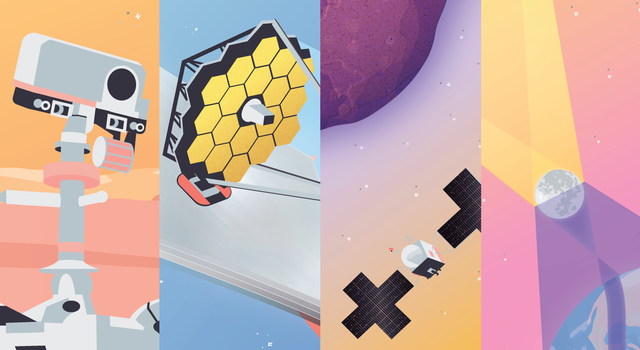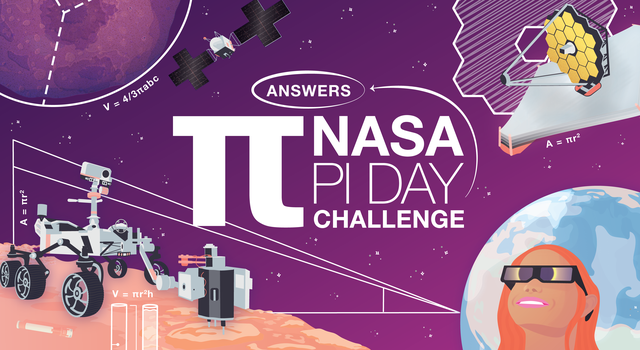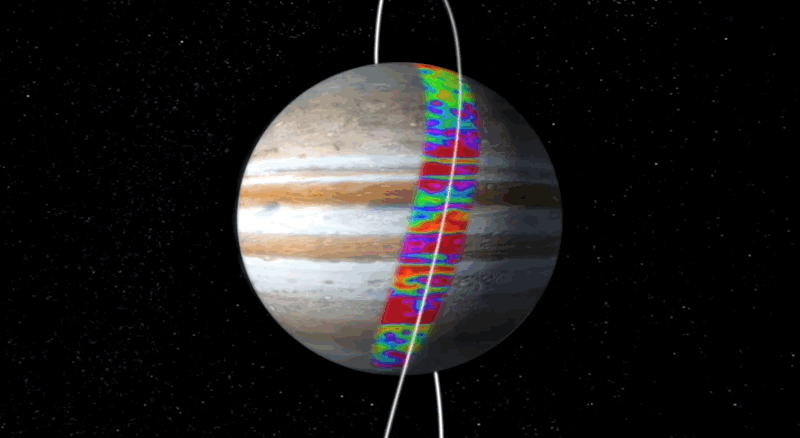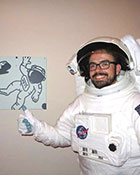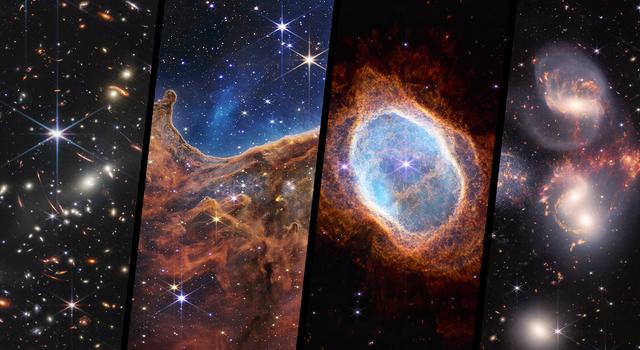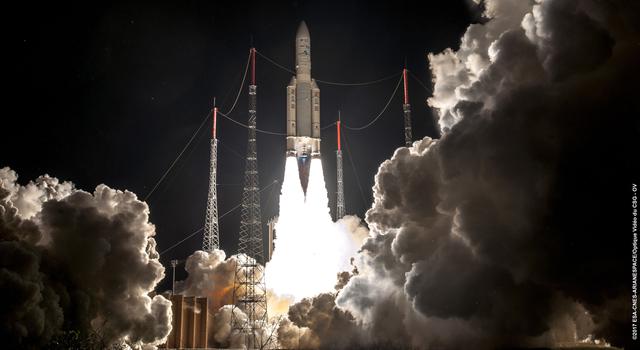Teachable Moments | March 9, 2023
10 Years of NASA's Pi Day Challenge
Learn how pi is used by NASA and how many of its infinite digits have been calculated, then explore the science and engineering that makes the Pi Day Challenge possible.
Update: March 15, 2023 – The answers are here! Visit the NASA Pi Day Challenge page to view the illustrated answer keys for each problem.
This year marks the 10th installment of the NASA Pi Day Challenge. Celebrated on March 14, Pi Day is the annual holiday that pays tribute to the mathematical constant pi – the number that results from dividing any circle's circumference by its diameter.
Every year, Pi Day gives us a reason to celebrate the mathematical wonder that helps NASA explore the universe and enjoy our favorite sweet and savory pies. Students can join in the fun once again by using pi to explore Earth and space themselves in the NASA Pi Day Challenge.
Read on to learn more about the science behind this year's challenge and find out how students can put their math mettle to the test to solve real problems faced by NASA scientists and engineers as we explore Earth, Mars, asteroids, and beyond!

Visit the Pi in the Sky 10 lesson page to explore classroom resources and downloads for the 2023 NASA Pi Day Challenge. Image credit: NASA/JPL-Caltech | + Expand image
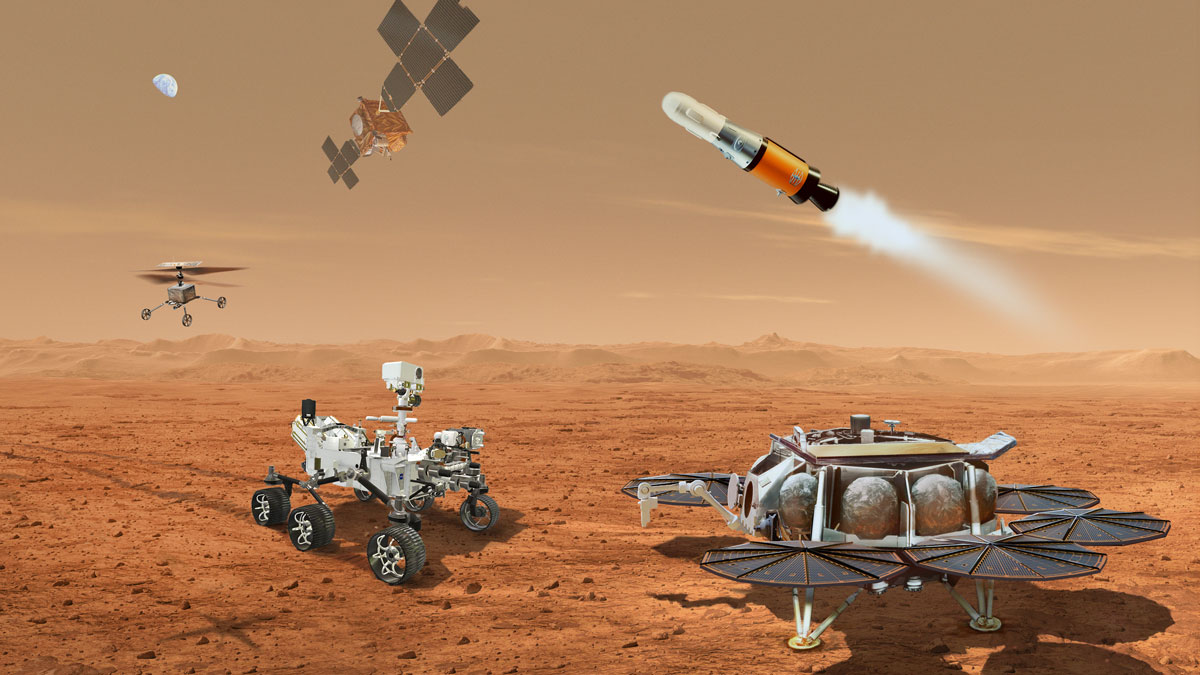
This illustration shows a concept for multiple robots that would team up to ferry to Earth samples of rocks and soil being collected from the Martian surface by NASA's Mars Perseverance rover. Image credit: NASA/JPL-Caltech | › Full image and caption
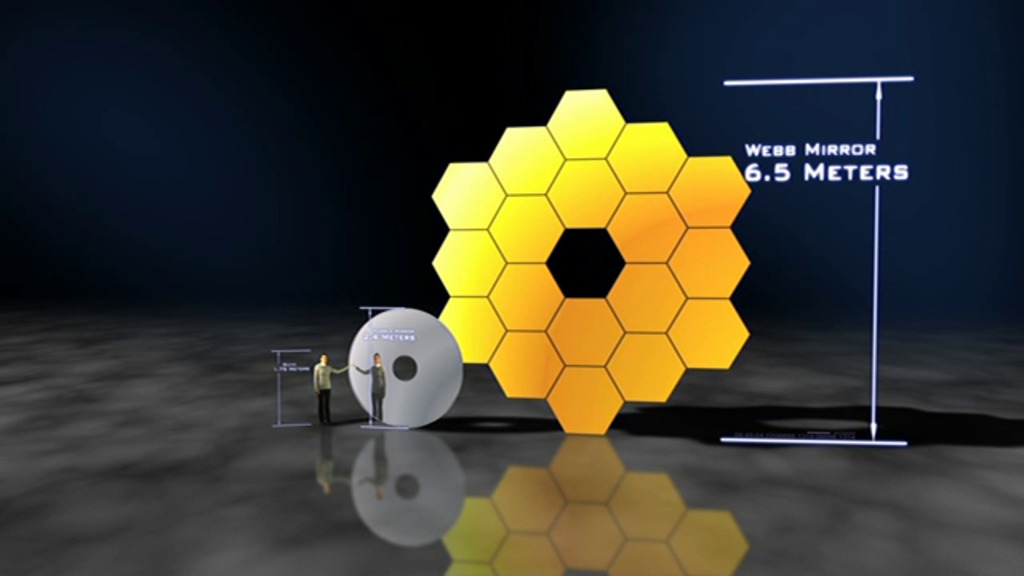
Image from animation comparing the relative sizes of James Webb's primary mirror to Hubble's primary mirror. Credit: NASA/Goddard Space Flight Center . | › Full animation
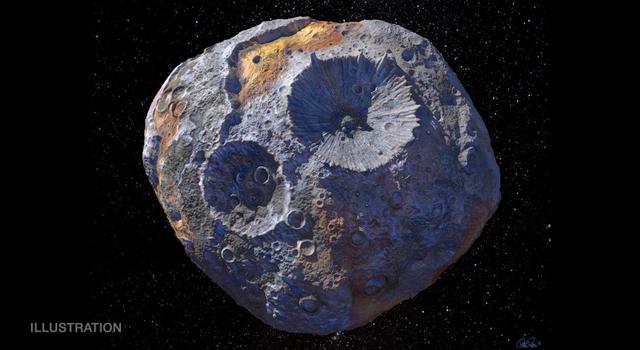
This illustration depicts the metal-rich asteroid Psyche, which is located in the main asteroid belt between Mars and Jupiter. Credits: NASA/JPL-Caltech/ASU | + Full image and caption
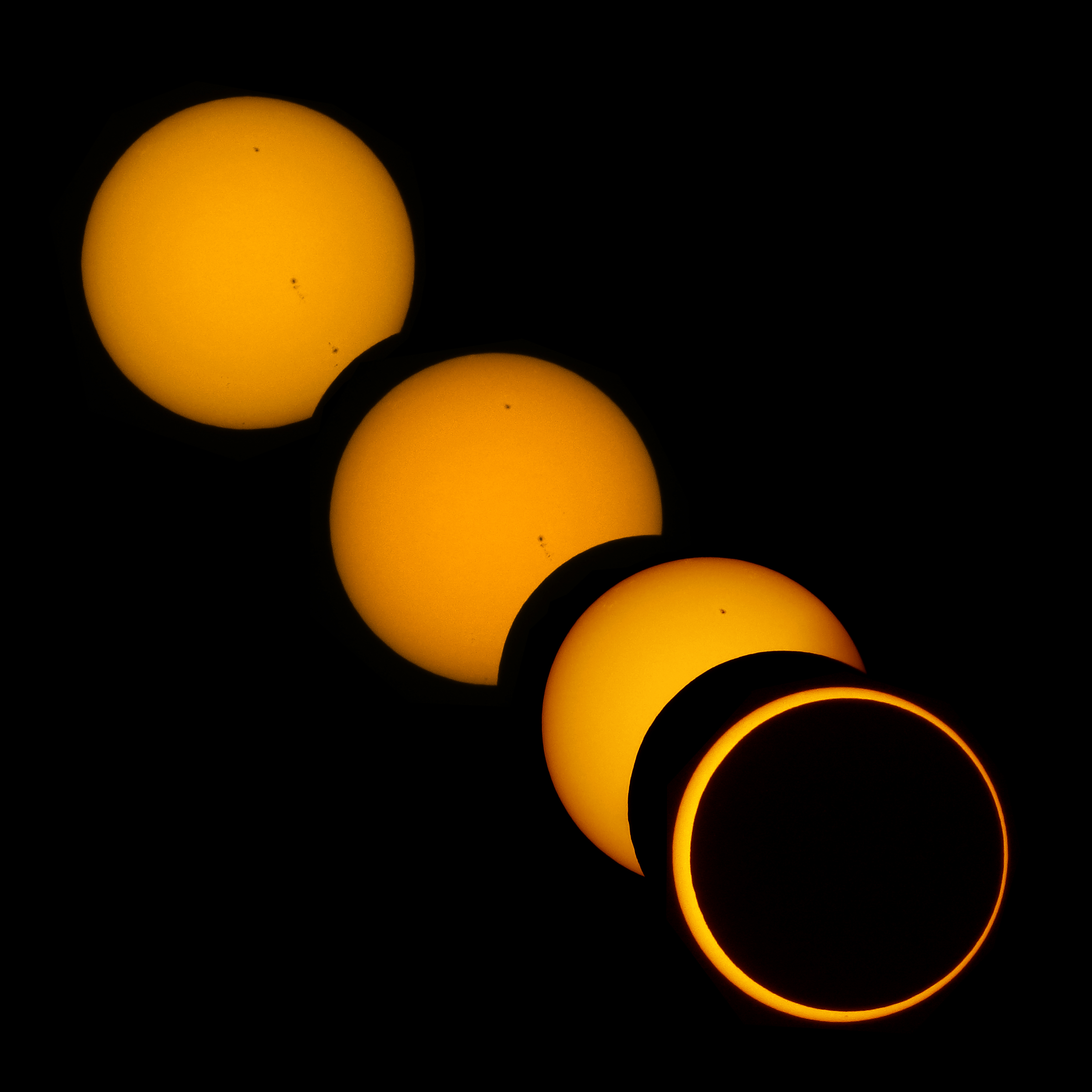
This image sequence shows an annular solar eclipse from May 2012. The bottom right frame illustrates the distinctive ring, or "annulus," of such eclipses. A similar eclipse will be visible from the South Pacific on May 10, 2013. Credits: Brocken Inaglory, CC BY-SA 3.0, via Wikimedia Commons | + Expand image
How It Works
Dividing any circle’s circumference by its diameter gives you an answer of pi, which is usually rounded to 3.14. Because pi is an irrational number, its decimal representation goes on forever and never repeats. In 2022, mathematician Simon Plouffe discovered the formula to calculate any single digit of pi. In the same year, teams around the world used cloud computing technology to calculate pi to 100 trillion digits. But you might be surprised to learn that for space exploration, NASA uses far fewer digits of pi.
Here at NASA, we use pi to measure the area of telescope mirrors, determine the composition of asteroids, and calculate the volume of rock samples. But pi isn’t just used for exploring the cosmos. Since pi can be used to find the area or circumference of round objects and the volume or surface area of shapes like cylinders, cones, and spheres, it is useful in all sorts of ways. Transportation teams use pi when determining the size of new subway tunnels. Electricians can use pi when calculating the current or voltage passing through circuits. And you might even use pi to figure out how much fencing is needed around a circular school garden bed.
In the United States, March 14 can be written as 3.14, which is why that date was chosen for celebrating all things pi. In 2009, the U.S. House of Representatives passed a resolution officially designating March 14 as Pi Day and encouraging teachers and students to celebrate the day with activities that teach students about pi. And that's precisely what the NASA Pi Day Challenge is all about!
The Science Behind the 2023 NASA Pi Day Challenge
This 10th installment of the NASA Pi Day Challenge includes four noodle-nudgers that get students using pi to calculate the amount of rock sampled by the Perseverance Mars rover, the light-collecting power of the James Webb Space Telescope, the composition of asteroid (16) Psyche, and the type of solar eclipse we can expect in October.
Read on to learn more about the science and engineering behind each problem or click the link below to jump right into the challenge.
› Take the NASA Pi Day Challenge
› Educators, get the lesson here!
Tubular Tally
NASA’s Mars rover, Perseverance, was designed to collect rock samples that will eventually be brought to Earth by a future mission. Sending objects from Mars to Earth is very difficult and something we've never done before. To keep the rock cores pristine on the journey to Earth, the rover hermetically seals them inside a specially designed sample tube. Once the samples are brought to Earth, scientists will be able to study them more closely with equipment that is too large to make the trip to Mars. In Tubular Tally, students use pi to determine the volume of a rock sample collected in a single tube.
Rad Reflection
When NASA launched the Hubble Space Telescope in 1990, scientists hoped that the telescope, with its large mirror and sensitivity to ultraviolet, visible, and near-infrared light, would unlock secrets of the universe from an orbit high above the atmosphere. Indeed, their hope became reality. Hubble’s discoveries, which are made possible in part by its mirror, rewrote astronomy textbooks. In 2022, the next great observatory, the James Webb Space Telescope, began exploring the infrared universe with an even larger mirror from a location beyond the orbit of the Moon. In Rad Reflection, students use pi to gain a new understanding of our ability to peer deep into the cosmos by comparing the area of Hubble’s primary mirror with the one on Webb.
Metal Math
Orbiting the Sun between Mars and Jupiter, the asteroid (16) Psyche is of particular interest to scientists because its surface may be metallic. Earth and other terrestrial planets have metal cores, but they are buried deep inside the planets, so they are difficult to study. By sending a spacecraft to study Psyche up close, scientists hope to learn more about terrestrial planet cores and our solar system’s history. That's where NASA's Psyche comes in. The mission will use specialized tools to study Psyche's composition from orbit. Determining how much metal exists on the asteroid is one of the key objectives of the mission. In Metal Math, students will do their own investigation of the asteroid's makeup, using pi to calculate the approximate density of Psyche and compare that to the density of known terrestrial materials.
Eclipsing Enigma
On Oct. 14, 2023, a solar eclipse will be visible across North and South America, as the Moon passes between Earth and the Sun, blocking the Sun's light from our perspective. Because Earth’s orbit around the Sun and the Moon’s orbit around Earth are not perfect circles, the distances between them change throughout their orbits. Depending on those distances, the Sun's disk area might be fully or only partially blocked during a solar eclipse. In Eclipsing Enigma, students get a sneak peek at what to expect in October by using pi to determine how much of the Sun’s disk will be eclipsed by the Moon and whether to expect a total or annular eclipse.
Teach It
Celebrate Pi Day by getting students thinking like NASA scientists and engineers to solve real-world problems in the NASA Pi Day Challenge. In addition to solving this year’s challenge, you can also dig into the more than 30 puzzlers from previous challenges available in our Pi Day collection. Completing the problem set and reading about other ways NASA uses pi is a great way for students to see the importance of the M in STEM.
Pi Day Resources
-
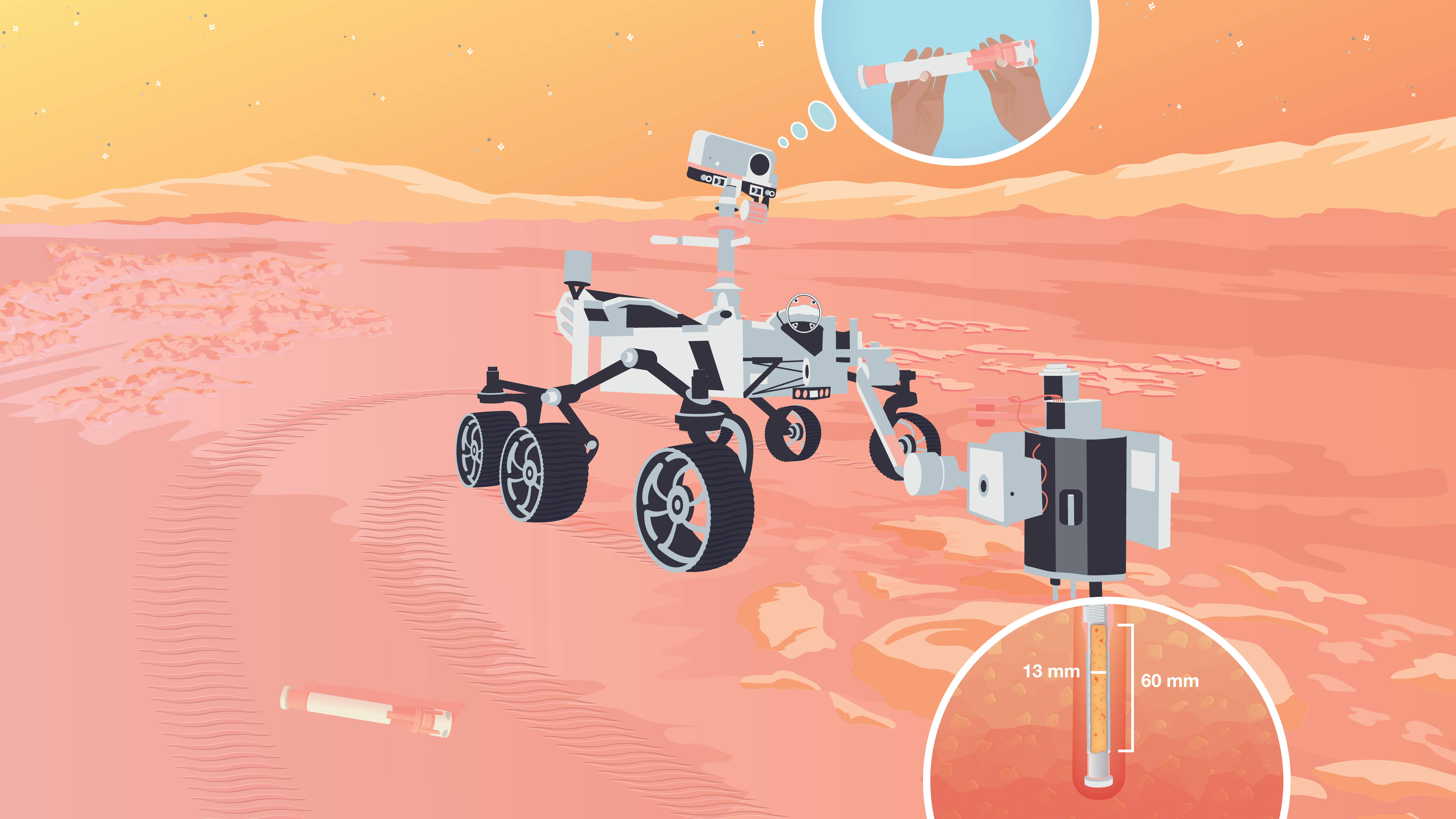
Pi in the Sky Lessons
Here's everything you need to bring the NASA Pi Day Challenge into the classroom.
Grades 4-12
Time Varies
-
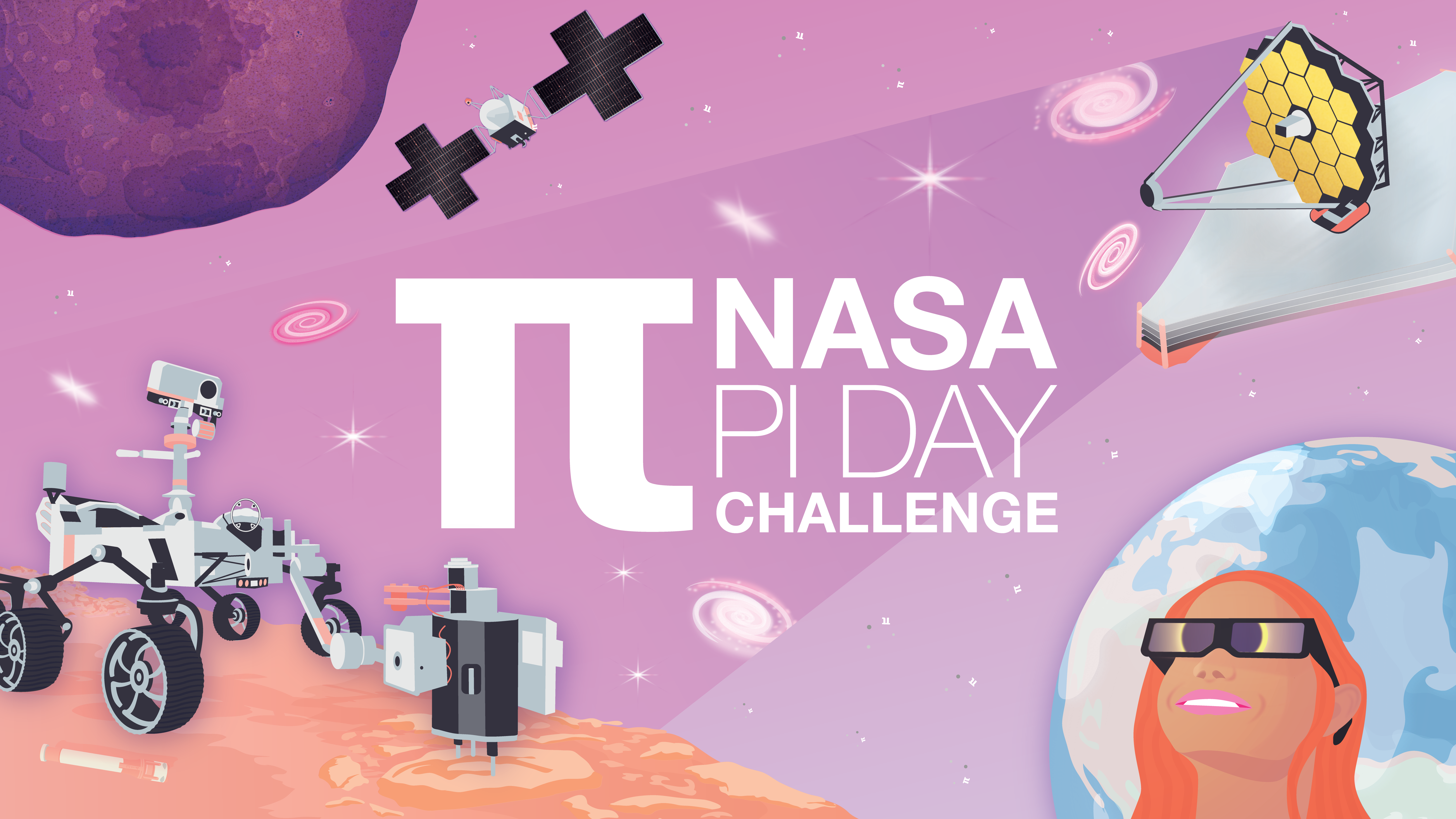
NASA Pi Day Challenge
The entire NASA Pi Day Challenge collection can be found in one, handy slideshow for students.
Grades 4-12
Time Varies
-
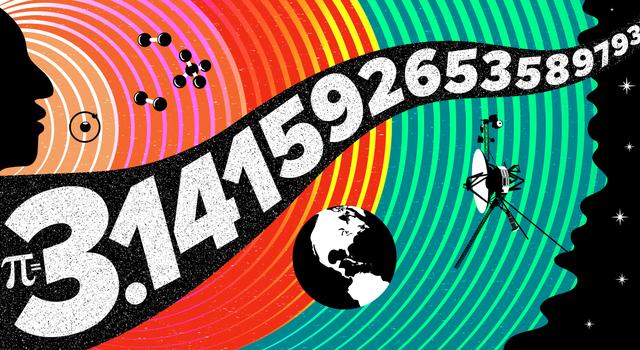
How Many Decimals of Pi Do We Really Need?
While you may have memorized more than 70,000 digits of pi, world record holders, a JPL engineer explains why you really only need a tiny fraction of that for most calculations.
-
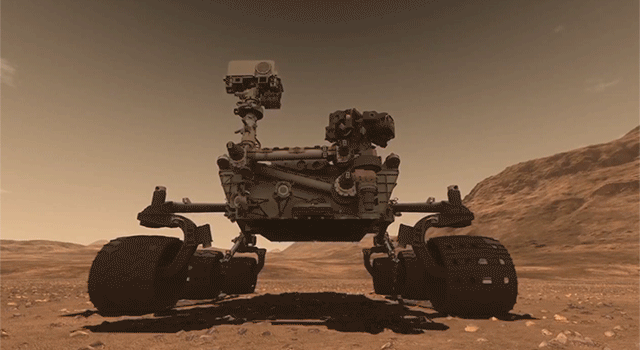
18 Ways NASA Uses Pi
Whether it's sending spacecraft to other planets, driving rovers on Mars, finding out what planets are made of or how deep alien oceans are, pi takes us far at NASA. Find out how pi helps us explore space.
-
10 Ways to Celebrate Pi Day With NASA on March 14
Find out what makes pi so special, how it’s used to explore space, and how you can join the celebration with resources from NASA.
-
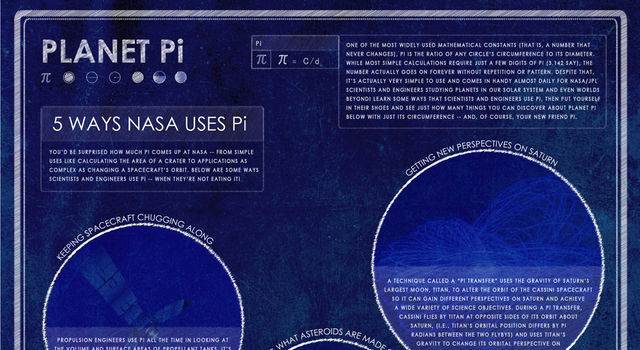
Infographic: Planet Pi
This poster shows some of the ways NASA scientists and engineers use the mathematical constant pi (3.14) and includes common pi formulas.
-
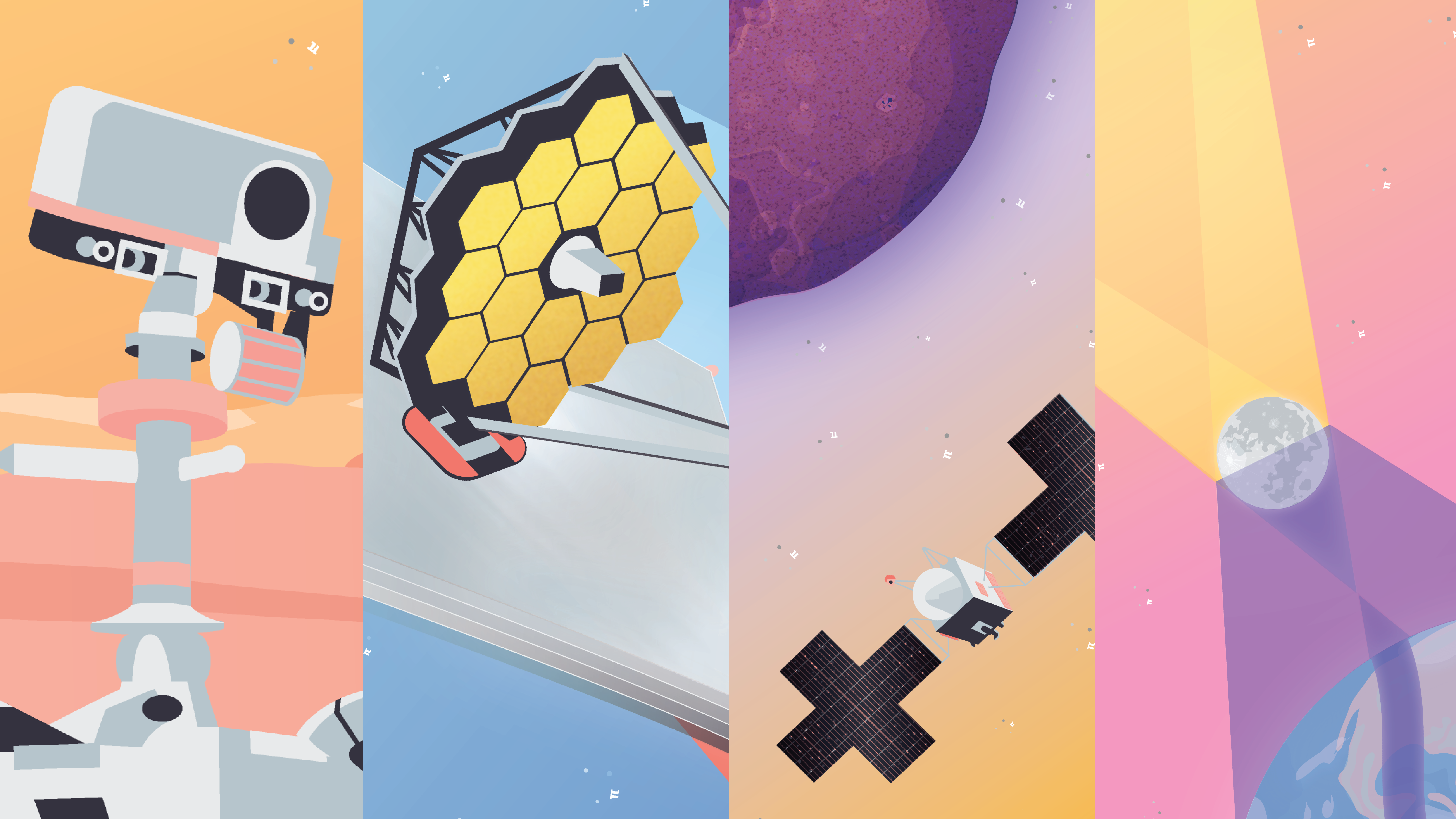
Downloads
Can't get enough pi? Download this year's NASA Pi Day Challenge graphics, including mobile phone and desktop backgrounds:
-

National Council of Teachers of Mathematics: Notice and Wonder
Creative brainstorming through noticing and wondering encourages student participation, engagement, and students' understanding of the NASA Pi Day Challenge.
Subject Mathematics
-
Pi Day: What's Going 'Round
Tell us what you're up to this Pi Day and share your stories and photos on our showcase page.
Plus, join the conversation using the hashtag #NASAPiDayChallenge on Facebook, Twitter, and Instagram.
Related Lessons for Educators
-
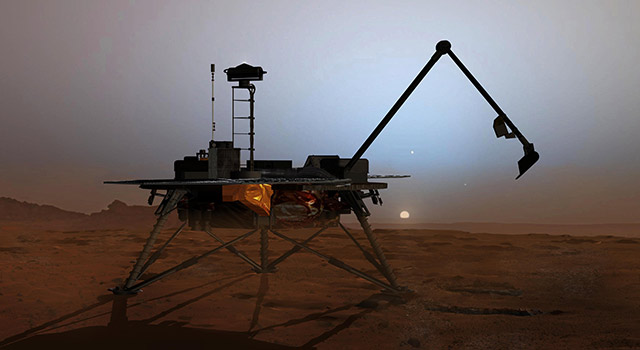
Robotic Arm Challenge
In this challenge, students will create a model robotic arm to move items from one location to another. They will engage in the engineering design process to design, build and operate the arm.
Grades K-8
Time 30 min to 1 hour
-
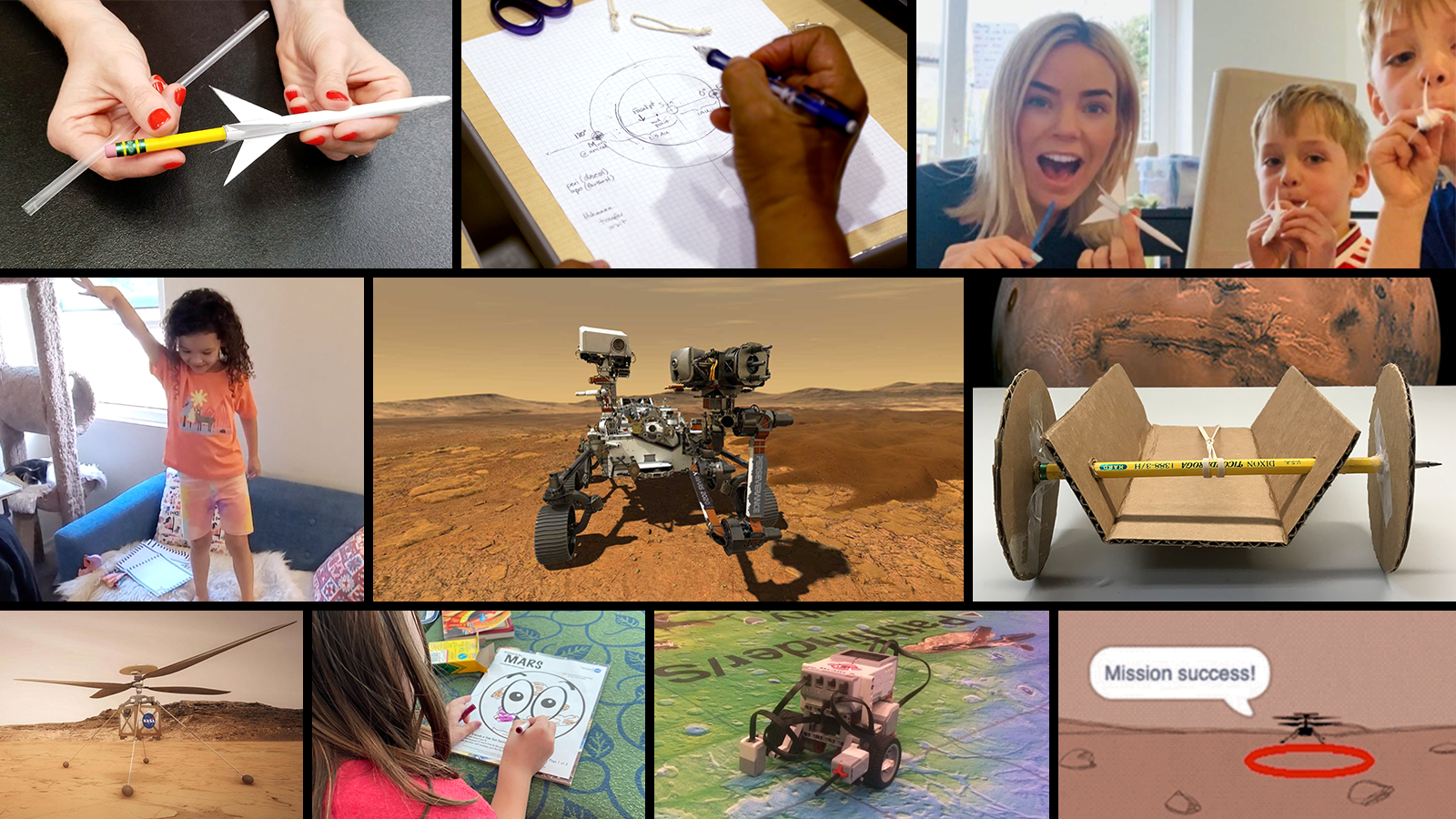
NASA's Mission to Mars Student Challenge
Take part in the exploration of Mars and bring students along for the ride with NASA's Perseverance rover.
Grades K-12
Time Varies
-
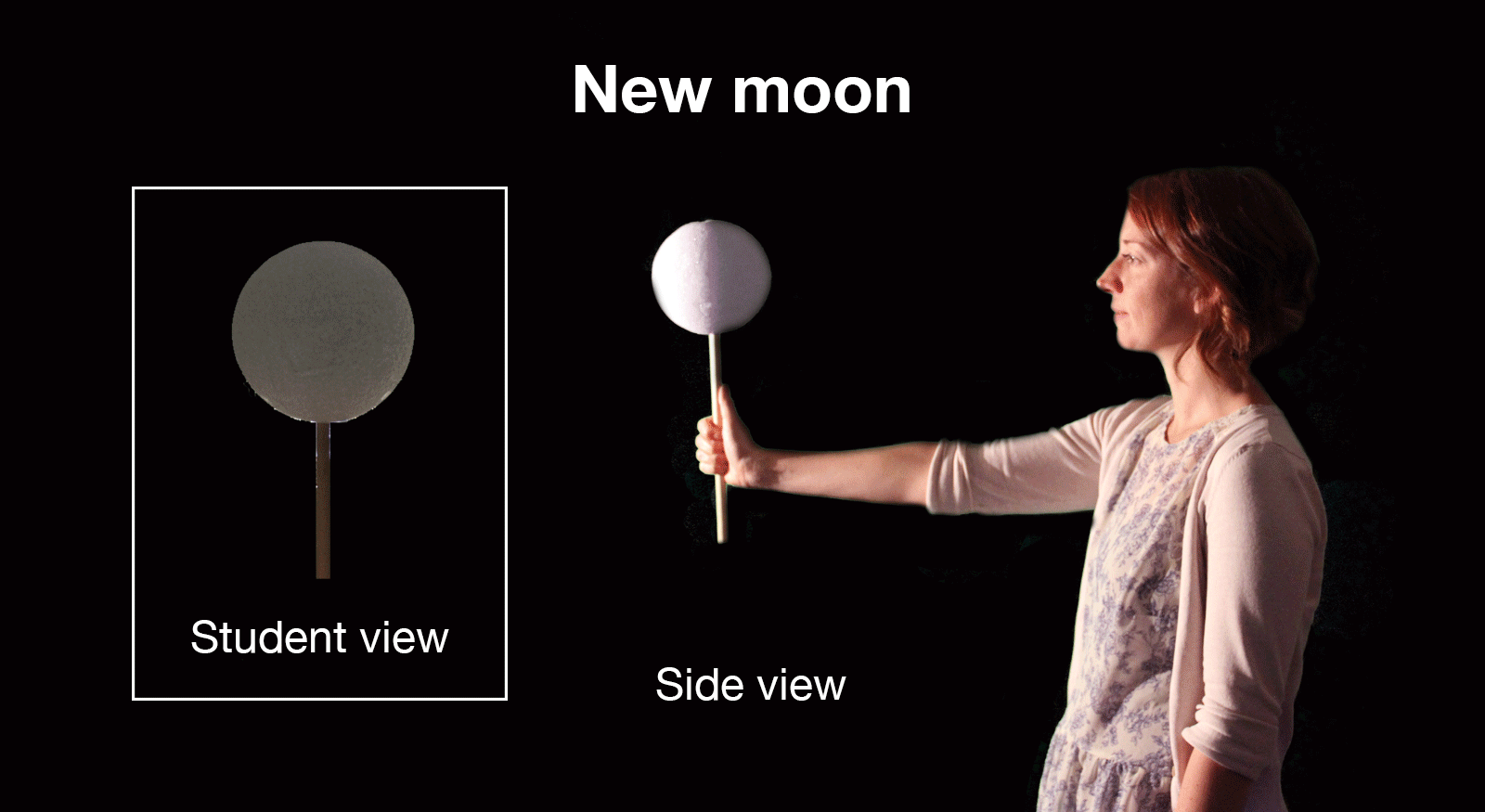
Moon Phases
Students learn about the phases of the moon by acting them out.
Grades 1-6
Time 30 min to 1 hour
-
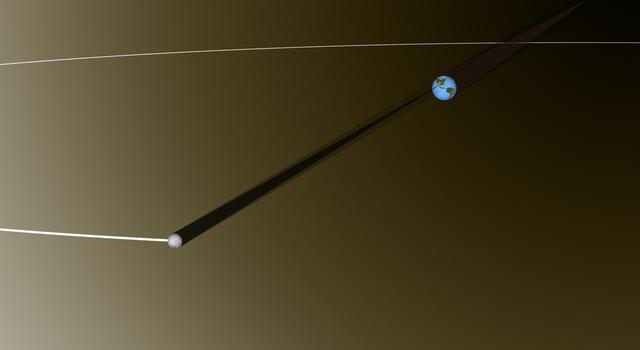
Modeling the Earth-Moon System
Students learn about scale models and distance by creating a classroom-size Earth-Moon system.
Grades 6-8
Time 30 min to 1 hour
-

Math of the Expanding Universe
Students will learn about the expanding universe and the redshift of lightwaves, then perform their own calculations with a distant supernova.
Grades 9-12
Time 30 min to 1 hour
-
The Expanded Universe: Playing with Time Activity Guide
In this activity, participants use balloons to model the expansion of the universe and observe how expansion affects wavelengths of light and distance between galaxies
-

James Webb Space Telescope STEM Toolkit
Find a collection of resources, activities, videos, and more for your students to learn about NASA’s newest space observatory.
-
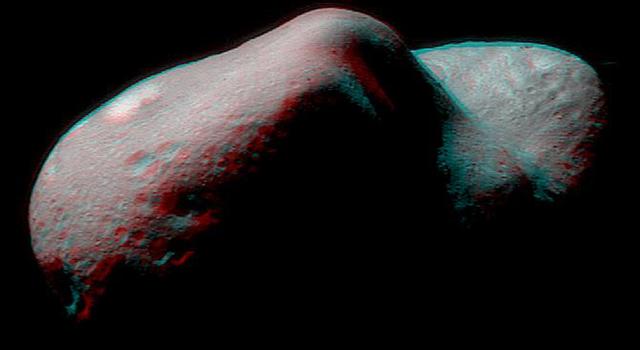
Modeling an Asteroid
Lead a discussion about asteroids and their physical properties, then have students mold their own asteroids out of clay.
Grades 3-5
Time 30 min to 1 hour
-
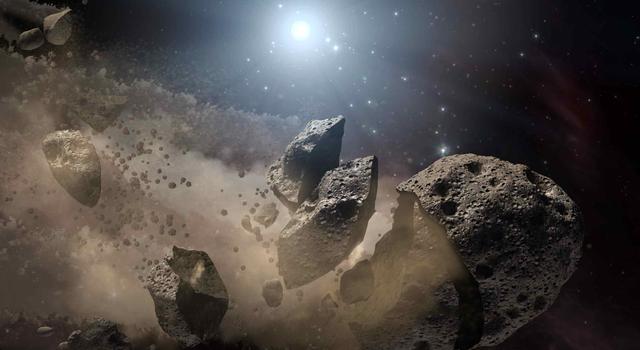
Math Rocks: A Lesson in Asteroid Dynamics
Students use math to investigate a real-life asteroid impact.
Grades 8-12
Time 30 min to 1 hour
Related Activities for Students
-
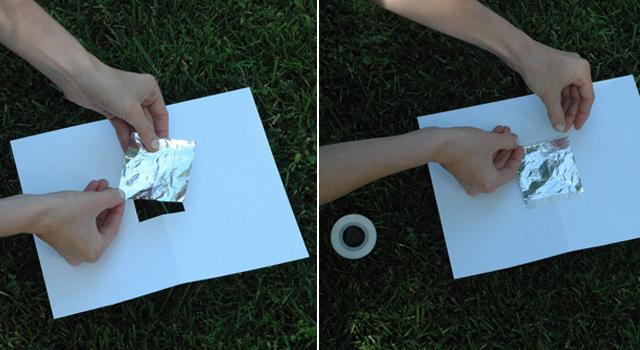
How to Make a Pinhole Camera
Learn how to make your very own pinhole camera to safely see a solar eclipse in action!
Type Project
Subject Engineering
-
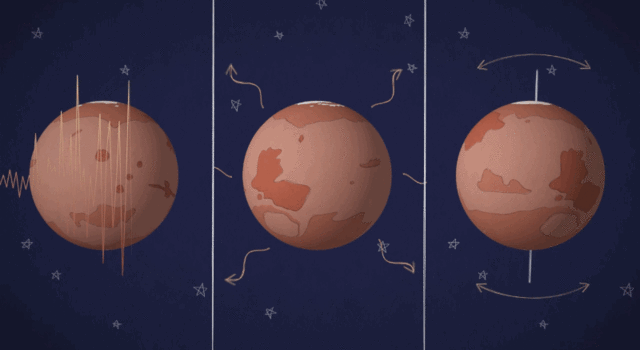
Collection: Exploring Mars
Make a cardboard rover, design a Mars exploration video game and explore more STEM projects, slideshows and videos for students.
Type Project
Subject Science
-
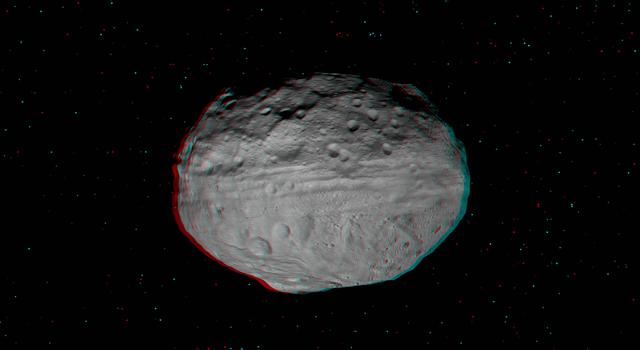
What's That Space Rock?
Find out how to tell the difference between asteroids, comets, meteors, meteorites and other bodies in our solar system.
Type Slideshow
Subject Science
-
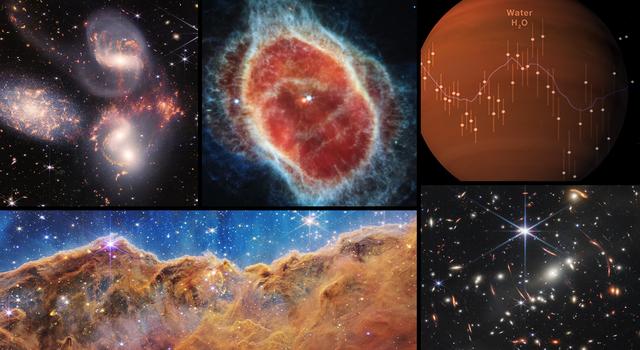
10 Things We Can Learn from Webb's First Images
Take a closer look at how images from NASA's most powerful space telescope yet are helping to answer some of astronomers' most burning questions.
Type Slideshow
Subject Science
Recursos en español
Facts and Figures
Websites
- Webb Space Telescope
- Mars Exploration
- Perseverance Mars Rover
- Mars Sample Return
- Psyche Mission
- MIRI Instrument
- 2023 Eclipse
Articles
Videos
Interactives
TAGS: Pi Day, Pi, Math, NASA Pi Day Challenge, sun, moon, earth, eclipse, asteroid, psyche, sample return, mars, perseverance, jwst, webb, hubble, telescope, miri
Teachable Moments | August 9, 2022
Webb Telescope Sees the Universe Like We've Never Seen It Before
Here's what we learned from the first set of images captured by NASA's newest space observatory and how to translate it into learning opportunities for students.
NASA’s newest space observatory, the James Webb Space Telescope, has returned its first set of images and spectra of five different targets – from nebulae to exoplanets to galaxy clusters – revealing the universe in ways never before seen. These targets, selected by a team of experts, represent just the start of the telescope's science operations and the beginning of our ability to see the universe in a whole new way.
Read on to learn more about what the space-based observatory’s images can tell us about the cosmos, how they were captured, and how to engage learners in the science and engineering behind the mission.
What JWST Saw
New Details Revealed About the Birth of Stars
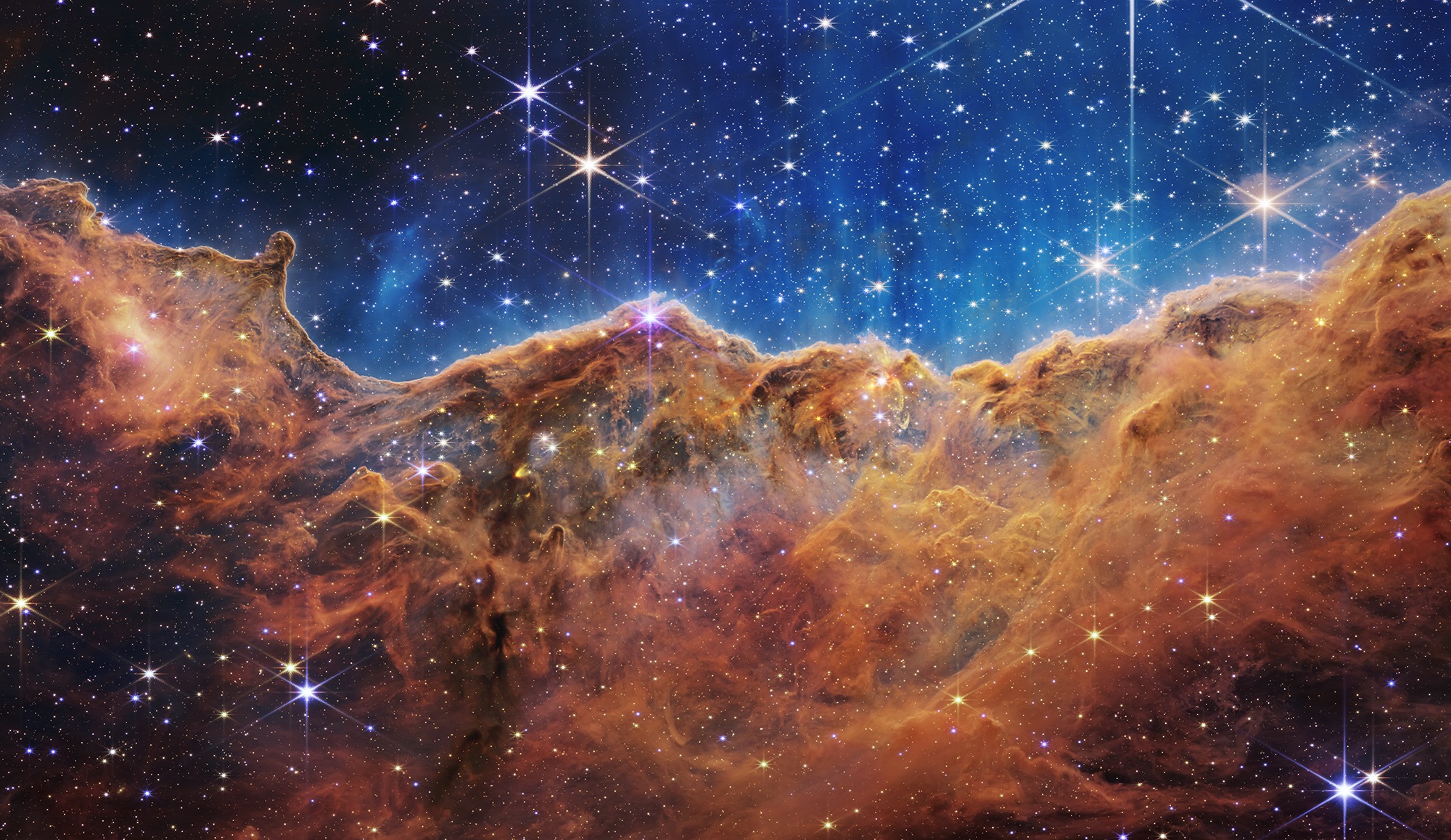
What looks much like craggy mountains on a moonlit evening is actually the edge of a nearby, young, star-forming region NGC 3324 in the Carina Nebula. Captured in infrared light by the Near-Infrared Camera (NIRCam) on NASA’s James Webb Space Telescope, this image reveals previously obscured areas of star birth. Credit: NASA, ESA, CSA, STScI | › Full image and caption | › Text description (PDF)
Stellar nurseries, young stars, and protostellar jets, which are narrow, ultra-fast streams of gas emanating from baby stars, are all on display in this image of the Carina Nebula, a cloud of gas and dust approximately 7,600 light years away.
Nebulae are massive clouds of gas and dust, some spanning up to hundreds of light-years across. Thanks to its infrared cameras, JWST can peer into these dusty regions of space, revealing incredible details previously unseen by other telescopes.
Within the Carina Nebula, a star-forming region known as NGC 3324 was captured by the Webb telescope in this image. As the edge of this region moves inward toward the gas and dust, it may encounter unstable areas. The pressure changes can cause the gas and dust to collapse, forming a new star in a process called accretion. However, if too much material is pushed away, it may prevent a star from forming.
The Webb telescope’s observations in nebulae like this will help scientists answer some of the unknown questions of astrophysics, like what determines the number of stars in a certain region and why do stars form with certain masses.
Scientists can also learn how star formation affects these clouds. Little is known about the numerous small, or low-mass, stars within nebulae. But by studying the jets revealed in the new image, scientists can understand how these stars are expelling gas and dust out of the cloud, thereby reducing the amount of material available to form new stars. Furthermore, scientists will be able to get a full count of these low-mass stars and account for their impact throughout the nebula.
Signs of Water on a Distant Planet

A transmission spectrum made from a single observation using Webb’s Near-Infrared Imager and Slitless Spectrograph (NIRISS) reveals atmospheric characteristics of the hot gas giant exoplanet WASP-96 b. Credits: NASA, ESA, CSA, STScI | › Full image and caption | › Text description (PDF)
JWST's observations of exoplanet WASP-96 b, a planet outside our solar system, is not an image but a spectrum of light. Within the spectrum are highlights that indicate the presence of water molecules. The spectrum also shows evidence of clouds and haze, which were thought not to exist in WASP-96 b's atmosphere.
WASP-96 b is an exoplanet made up mostly of gas. About half the mass of Jupiter, but slightly larger, it orbits much closer to its star, completing a revolution every 3.4 days compared with 12 years for Jupiter.
This measurement, known as a transmission spectrum, was collected as WASP-96 b transited, or passed in front of, its host star from the perspective of the telescope. It compares the light that passed through the atmosphere of the exoplanet with the light from the planet's parent star alone. As a result, it is possible to see the amount of light at each wavelength blocked by the planet and absorbed by its atmosphere, telling scientists the size of the planet and the chemicals contained in its atmosphere.
While WASP-96 b’s spectrum had been captured before, the Webb telescope provided the most detailed view of its spectrum in near-infrared, and the improved resolution completely changed our understanding of the exoplanet’s atmosphere. Using this spectrum, scientists will be able to measure the amount of water in the exoplanet's atmosphere, determine how much oxygen and carbon it contains, infer the make-up of the planet, and even how, when, and where it formed.
Star Pair Coming Into Focus
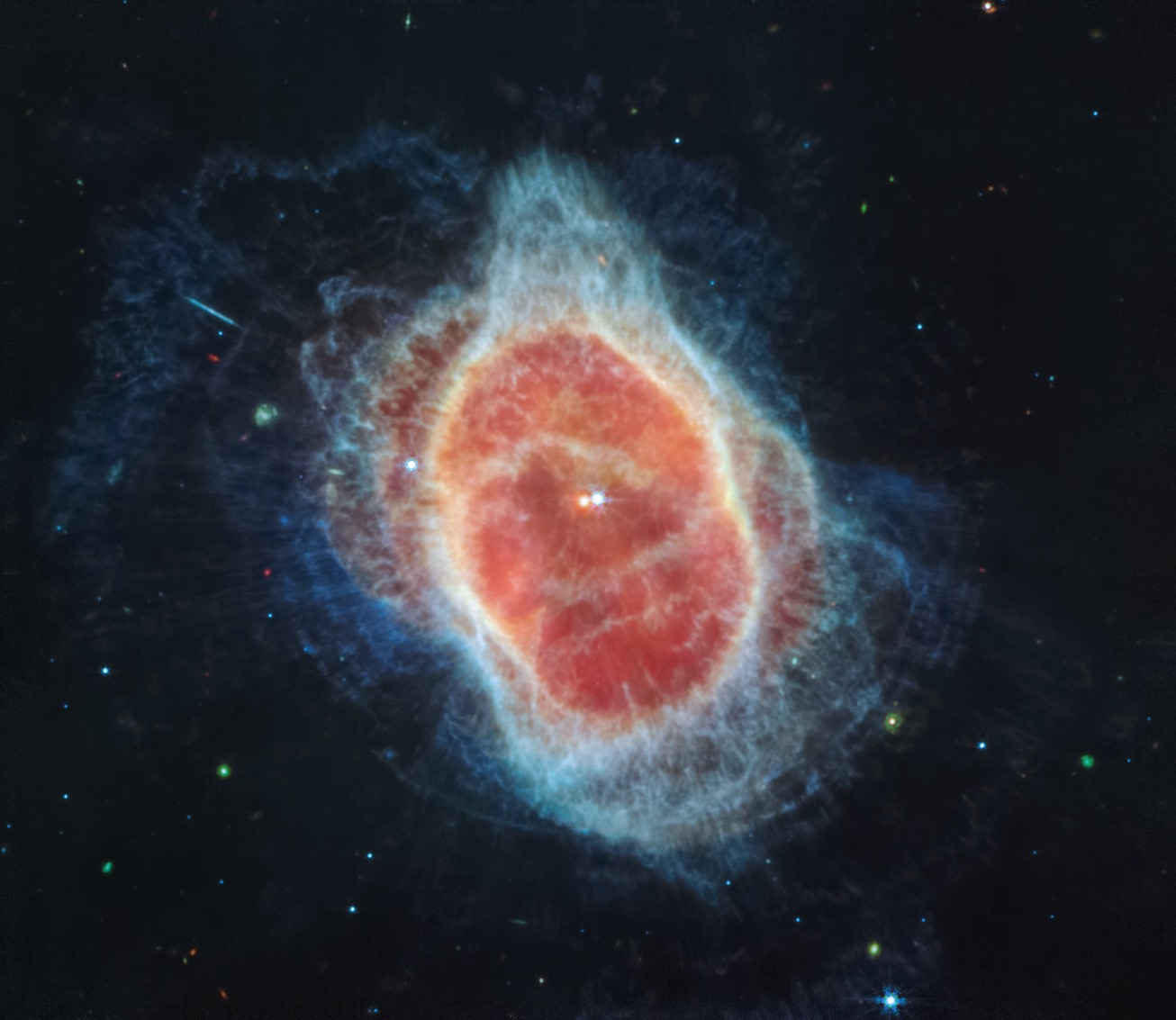
NASA’s Webb Telescope has revealed the cloak of dust around the second star, shown at left in red, at the center of the Southern Ring Nebula for the first time. It is a hot, dense white dwarf star. Credits: NASA, ESA, CSA, STScI | › Full image and caption | › Text description (PDF)
Two distinct stars can be seen in this image of the center of the Southern Ring Nebula – a pairing that was believed to exist but was not visible in previous images.
The star pair came into view thanks to the space telescope's MIRI instrument, which is designed to capture wavelengths of light in the mid-infrared range of the electromagnetic spectrum. MIRI’s ability to see in the mid-infrared revealed that the older of the two stars is surrounded by dust. Seeing this dust clearly is what makes the second star visible in the image. While the brighter star is in an earlier stage of its life, it will likely form its own planetary nebula in the future.
About 2,500 light-years away from Earth, the Southern Ring is a planetary nebula – a shell of gas and dust shed from a dying white dwarf star at its center. Its gases stretch out for nearly half a light-year and are speeding away from the star at approximately nine miles per second!

The bright star at the center of NGC 3132, while prominent when viewed by NASA’s Webb Telescope in near-infrared light, plays a supporting role in sculpting the surrounding nebula. A second star, barely visible at lower left along one of the bright star’s diffraction spikes, is the nebula’s source. It has ejected at least eight layers of gas and dust over thousands of years. Credits: NASA, ESA, CSA, STScI | › Full image and caption | › Text description (PDF)
The images from JWST reveal that starlight streams out of the nebula in fine lines, the result of holes in the surrounding gas and dust cloud. The types and locations of different molecules within the cloud, gleaned from the captured spectra, will help to fine tune our understanding of the structure, composition, and history of this nebula, and with future observations, other nebulae.
How Galaxies Interact

An enormous mosaic of Stephan’s Quintet is the largest image to date from NASA’s James Webb Space Telescope, covering about one-fifth of the Moon’s diameter. It contains over 150 million pixels and is constructed from almost 1,000 separate image files. The visual grouping of five galaxies was captured by Webb’s Near-Infrared Camera (NIRCam) and Mid-Infrared Instrument (MIRI). Credits: NASA, ESA, CSA, STScI | › Full image and caption | › Text description (PDF)
The Webb telescope's capabilities bring new eyes to a cluster of galaxies first discovered in 1877 and known as Stephan’s Quintet. On display in this sharp new image are regions of new star birth containing millions of young stars as well as tails of gas, dust, and stars being ripped from galaxies as a result of gravitational forces between the galaxies.
Stephan’s Quintet is a dense cluster of galaxies located 290 million light-years away in the constellation Pegasus. Four of the five galaxies within the quintet are locked in orbits that repeatedly bring them close to one another. The fifth (leftmost) galaxy is seven times closer to Earth than the others. But its location within the line of sight of the distant four makes it appear to be grouped with them. What looks like speckles surrounding the nearby galaxy and could be mistaken for digital noise is actually individual stars from that galaxy.
It may seem distant in pure numbers, but Stephan's Quintet is relatively close compared to galaxies that are billions of light-years away. Its proximity gives astronomers a great view of the interactions that occur between galaxies that are near to each other.
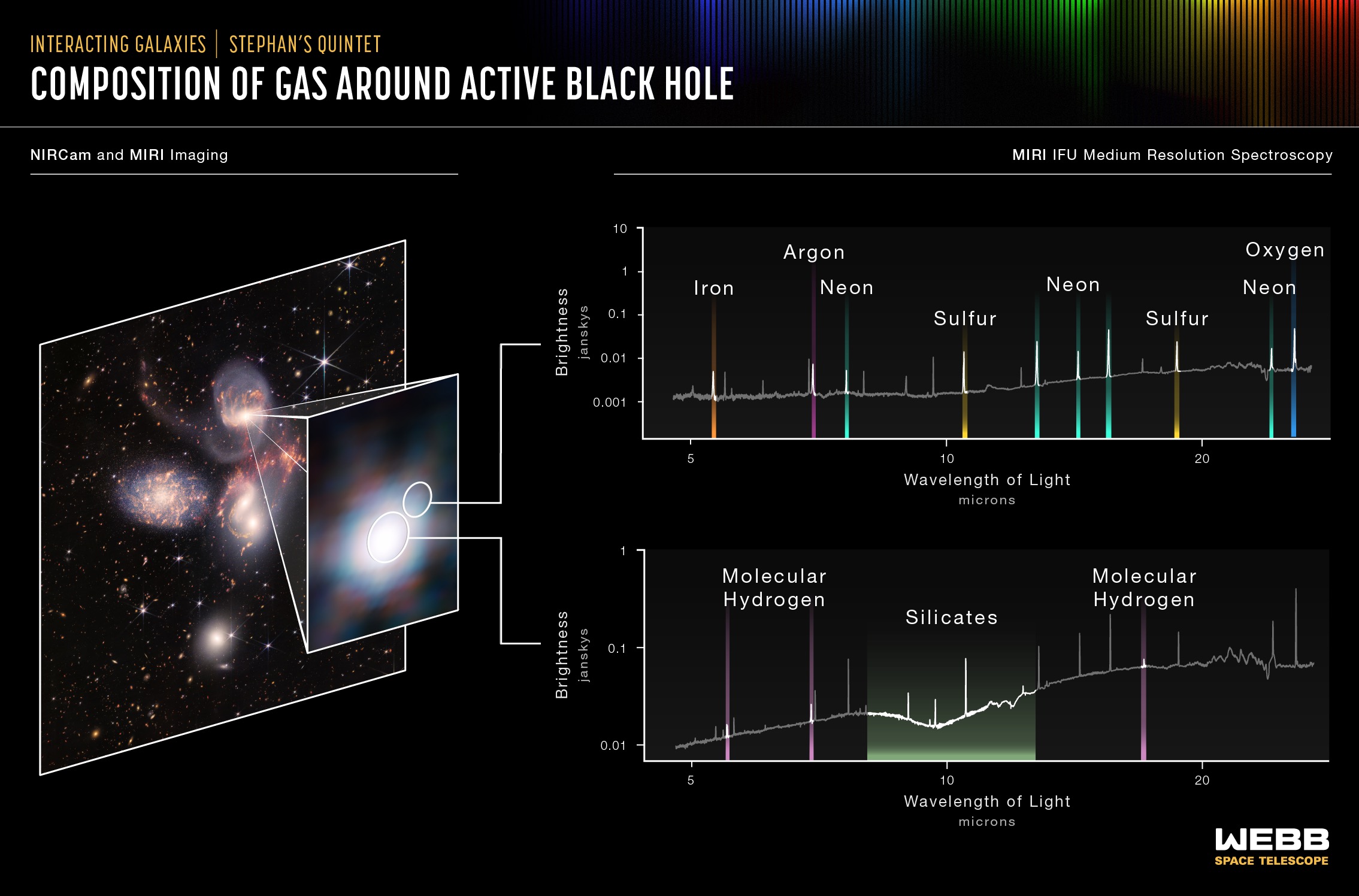
The MIRI instrument measured the composition of gas around the black hole at the center of one of the galaxies in Stephan's Quintent to find a region filled with hot, ionized gases, including iron, argon, neon, sulfur and oxygen (top spectrum). The instrument also revealed that the supermassive black hole has a reservoir of colder, denser gas with large quantities of molecular hydrogen and silicate dust (bottom spectrum). Credits: NASA, ESA, CSA, STScI | › Full image and caption | › Text description (PDF)
The detail exposed will allow scientists to understand the interactions occurring in much more distant – and harder to observe – galaxies. Close inspections of galactic nuclei captured in mid-infrared by the telescope's MIRI instrument revealed hot gas being stripped of its electrons by winds and radiation from a supermassive black hole at the center of one galaxy. The new detail helped scientists determine that iron, argon, neon, sulfur and oxygen, as well as silicate dust are contained in these gases.
Meanwhile, the telescope's NIRSpec instrument – which can capture up to 100 spectra at a time – was able to identify atomic and molecular hydrogen as well as iron ions in the gases around the black hole. These observations will provide a greater understanding about the rate at which supermassive black holes feed and grow.
Thousands of Galaxies in a Grain of Sand
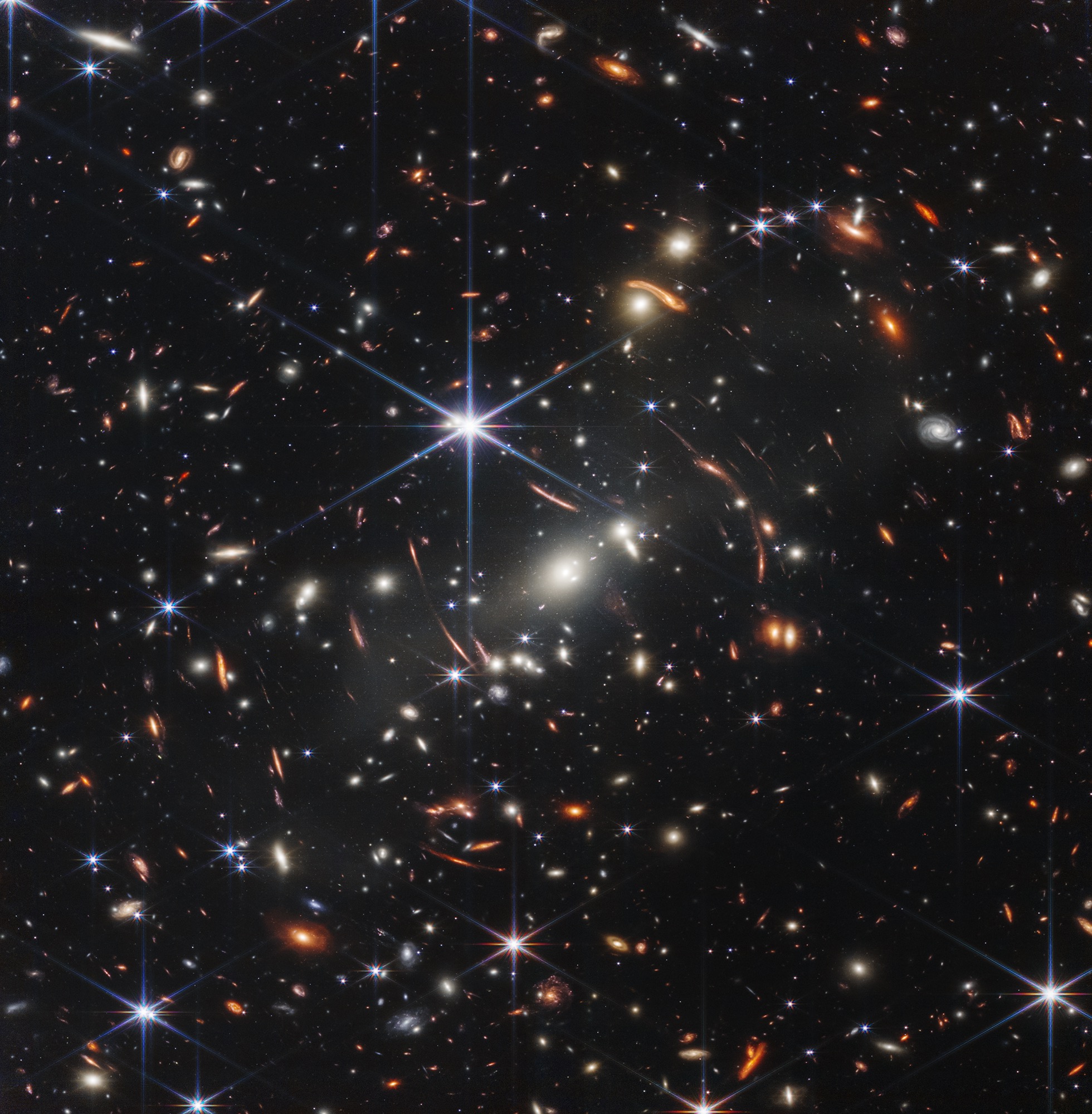
NASA’s James Webb Space Telescope has produced the deepest and sharpest infrared image of the distant universe to date. Known as Webb’s First Deep Field, this image of galaxy cluster SMACS 0723 is overflowing with detail. Credits: NASA, ESA, CSA, STScI | › Full image and caption | › Text description (PDF)
This image contains thousands of galaxies as well as the faintest objects yet observed in the infrared. Known as a deep field image, it was made by pointing the telescope at the target for an extended period of time, allowing the detectors to collect as much of the faint, distant light as possible. JWST captured this deep field image in just 12.5 hours, while the Hubble Space Telescope spent two weeks capturing its deepest images. (Note that Hubble also observed this galaxy cluster, but not as a deep field image.)
Hold a single grain of sand at arm's length and you could cover the entire area of space captured by this image. Keen observers will notice what appear as warped or stretched galaxies. Those are the result of gravitational lensing, a phenomenon in which the gravity of the galaxy cluster centered in the foreground bends the light from background galaxies magnifying and distorting their light. Taking advantage of this phenomenon allows for viewing of extremely distant and very faint galaxies.
The galaxy cluster shown in the image is known as SMACS 0723 and it appears as it did 4.6 billion years ago – the length of time it took for its light to reach the telescope. Light from the oldest-known galaxy in the image had been traveling for 13.1 billion years before it reached JWST.
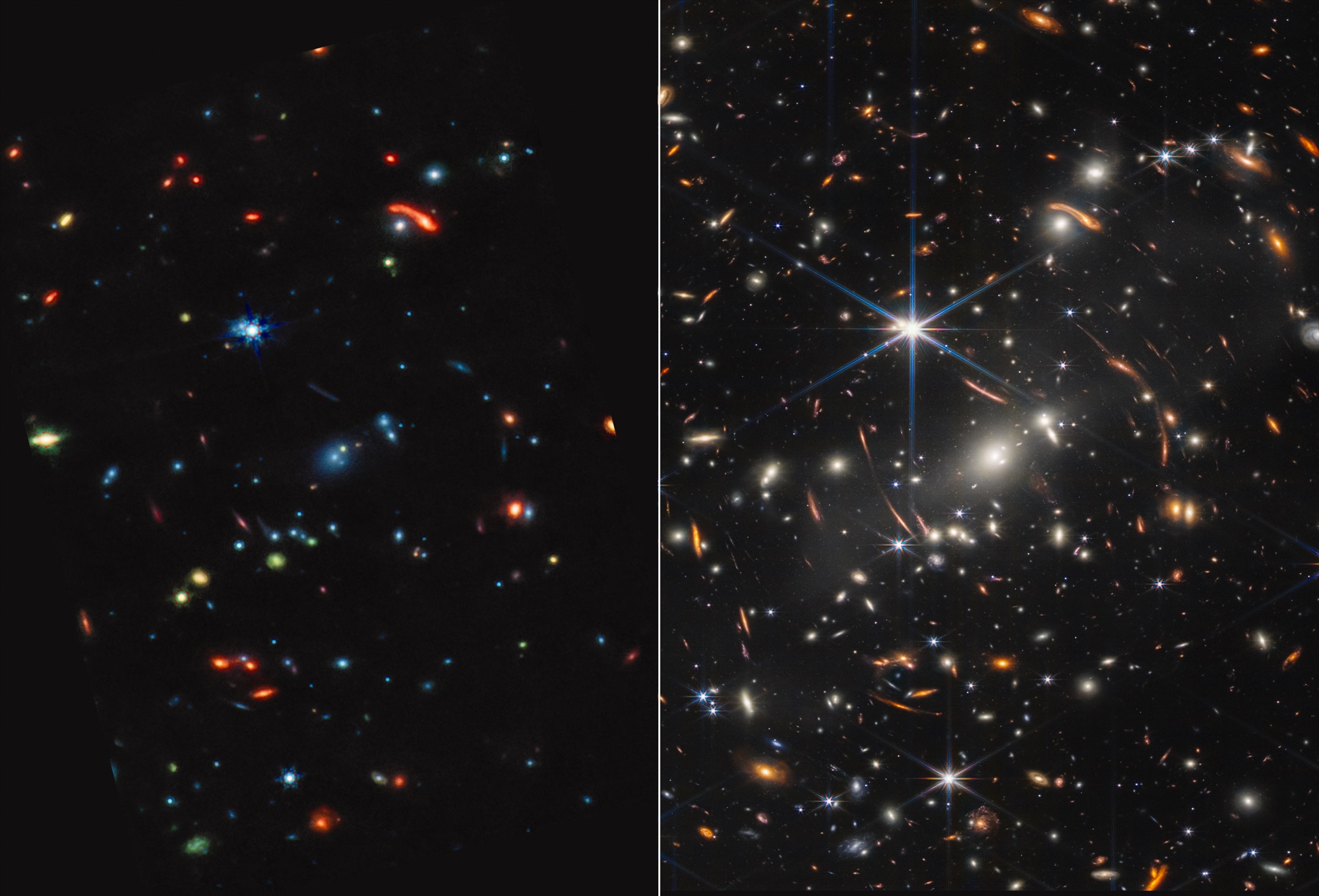
Galaxy cluster SMACS 0723 is a technicolor landscape when viewed in mid-infrared light by NASA’s James Webb Space Telescope. Compared to Webb’s near-infrared image at right, the galaxies and stars are awash in new colors. Credits: NASA, ESA, CSA, STScI | › Full image and caption | › Text description (PDF)
The MIRI instrument’s ability to detect longer infrared wavelengths provides additional information in the image about the make-up of those galaxies. Mid-infrared light highlights dust, an important star-forming ingredient. In this image, red objects contain thick dust layers, while blue galaxies contain stars but not much dust. Green objects contain dust filled with hydrocarbons and other compounds. With these data, astronomers will be able to better understand the formation and growth of galaxies.
As impressive as this image is, the JWST team has plans to capture more deep field images using even longer exposure times. Keep up to date with the latest images and spectra from JWST throughout the school year at the Webb Space Telescope Resource Gallery.
How They Did It
The Webb telescope's ability to detect these objects in such great detail is enabled by its size, the way it observes the universe, and the unique technologies aboard. We went into more detail about how JWST works in a previous Teachable Moment, but below you’ll find a review of some of the important ways JWST was uniquely designed to capture these groundbreaking images.
Observing the Infrared

Light waves get stretched as the universe expands similar to how this ink mark stretches out as the elastic is pulled. Get students modeling and exploring this effect with this standards-aligned math lesson. Credit: NASA/JPL-Caltech | + Expand image
The Webb telescope was built with instruments like NIRSpec and MIRI that are sensitive to light in the near- and mid-infrared wavelengths to detect some of the most distant objects in space.
As light from distant objects travels to Earth, the universe expands, something it’s been doing since the Big Bang. The waves that make up the light get stretched as the universe expands. Visible lightwaves from distant objects that you would be able to see with your eyes get stretched out so far that the longer wavelengths shift from visible light into infrared. Scientists refer to this phenomenon as redshift – and the farther away an object is, the more redshift it undergoes.
Gathering Light
The light from some of these distant objects has traveled so far that it is incredibly dim. To see such dim light, the Webb telescope was built to be extremely sensitive. On the Webb telescope, 18 hexagonal mirrors combine to form a massive primary mirror that is 21 feet (6.5 meters) across – six times the surface area of Hubble.

The complete optical telescope element on display inside a clean room at NASA’s Goddard Space Flight Center in Greenbelt, Maryland, in 2017. Credits: NASA/Desiree Stover | › Full image and caption
To detect faint infrared light, the instruments inside the telescope have to be kept very cold, otherwise those infrared signals could get lost in the heat of the telescope. The spacecraft’s orbit and tennis-court-size sunshield keep light and heat from the Sun, Earth, and Moon from warming up its sensitive instruments. And the MIRI instrument, which needs to be even colder to capture mid-infrared wavelengths, is equipped with a special cryocooler.
The unique design and innovative techniques used by the James Webb Space Telescope are what made the first images possible. As the mission continues, more targets will be observed, more discoveries will be made, and more of our universe will unfold before our eyes.
“It’s not every day you can say you contributed to something that inspires the world in a positive way, but I believe that’s what JWST is doing for everyone of all ages,” said JPL engineer Analyn Schneider, who is the project manager for the telescope's MIRI instrument. “The telescope will help us learn more about our galaxy and the rest of the universe, and as a bonus we get these magnificent images. Learning is a big part of being in science and engineering and that’s what makes it interesting and challenging.”
Teach It
Bring the excitement of these far-off observations closer to home by using the following resources in your learning environment, whether in-person, hybrid, or remote. Scientists and educators directly connected with the James Webb Space Telescope have teamed up to provide a collection of Webb resources to meet your needs. Find additional resources below and through NASA’s Universe of Learning project.
Lessons
-
The Expanded Universe: Playing With Time Activity Guide
In this activity, participants use balloons to model the expansion of the universe and observe how expansion affects wavelengths of light and distance between galaxies.
-

Modeling the Orbits of Planets
Students use a planar model of a gravity well to create different orbital configurations around a central mass.
Subject Science
Grades 6-12
Time 30-60 mins
-

Math of the Expanding Universe
Students will learn about the expanding universe and the redshift of lightwaves, then perform their own calculations with a distant supernova.
Subject Science
Grades 9-12
Time 30-60 mins
-

The Science of Color
Quickly and easily model how colors reflect, absorb, and interact with each other in the classroom or online using your computer’s camera.
Subject Science
Grades 2-8
Time < 30 mins
-
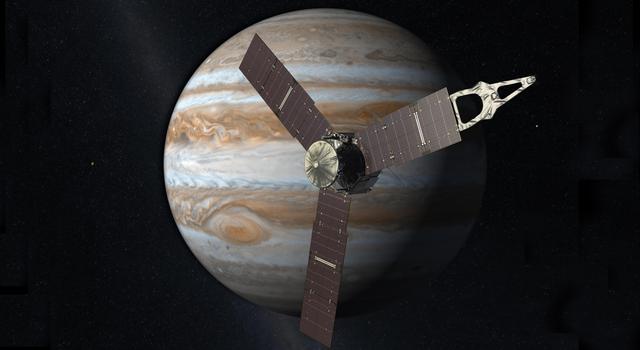
Calculating Solar Power in Space
Students explore practical applications of exponents and division to investigate what it takes for NASA spacecraft to travel deep into the solar system using only solar power.
Subject Math
Grades 6-8
Time 30-60 mins
-
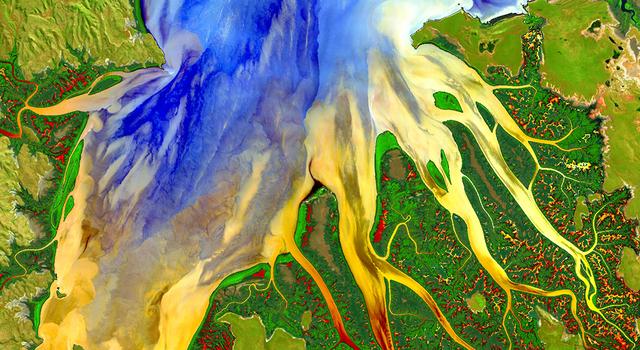
Using Light to Study Planets
Students build a spectrometer using basic materials as a model for how NASA uses spectroscopy to determine the nature of elements found on Earth and other planets.
Subject Science
Grades 6-11
Time > 2 hrs
-
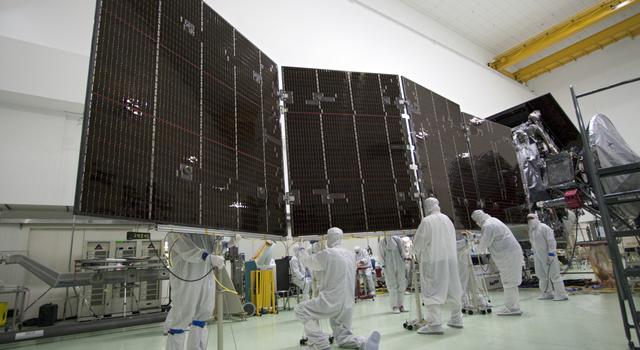
Collecting Light: Inverse Square Law Demo
In this activity, students learn how light and energy are spread throughout space. The rate of change can be expressed mathematically, demonstrating why spacecraft like NASA’s Juno need so many solar panels.
Subject Math
Grades 6-12
Time < 30 mins
-
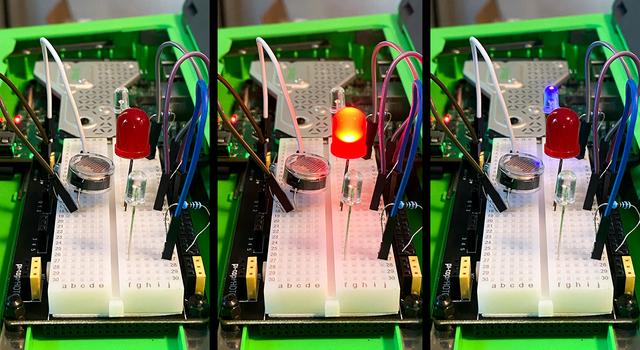
Build a Light Detector Inspired by Space Communications
In this advanced programming activity, students will construct a light-wavelength detector to model future technology for communicating with spacecraft.
Subject Technology
Grades 9-12
Time > 2 hrs
-

James Webb Space Telescope STEM Toolkit
Find a collection of resources, activities, videos, and more for your students to learn about NASA’s newest space observatory.
Student Activities
Explore More
-
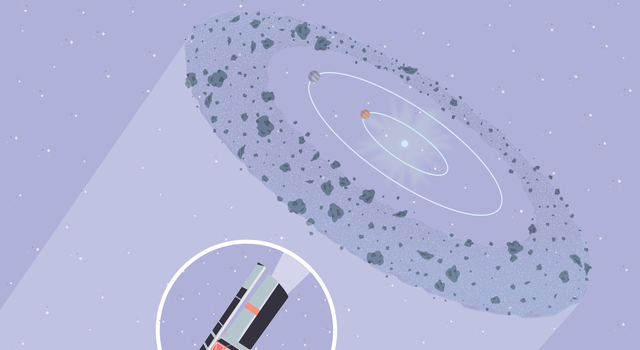
Planet Pinpointer: A 'Pi in the Sky' Math Challenge
In this illustrated math problem, students use pi to calculate the distance across a disk of debris around the star Beta Pictoris.
Subject Math
Grades 10-12
Time < 30 mins
-
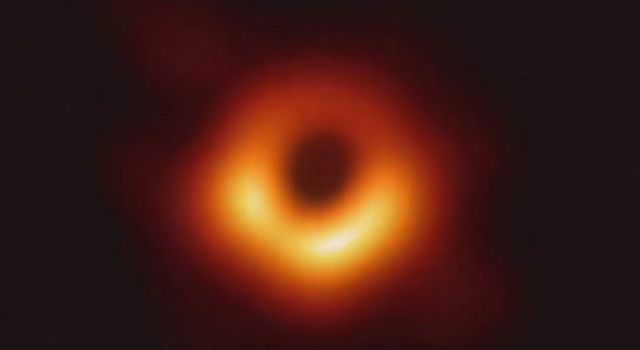 Teachable Moments
Teachable MomentsHow Scientists Captured the First Image of a Black Hole
Find out how scientists created a virtual telescope as large as Earth itself to capture the first image of a black hole's silhouette.
-
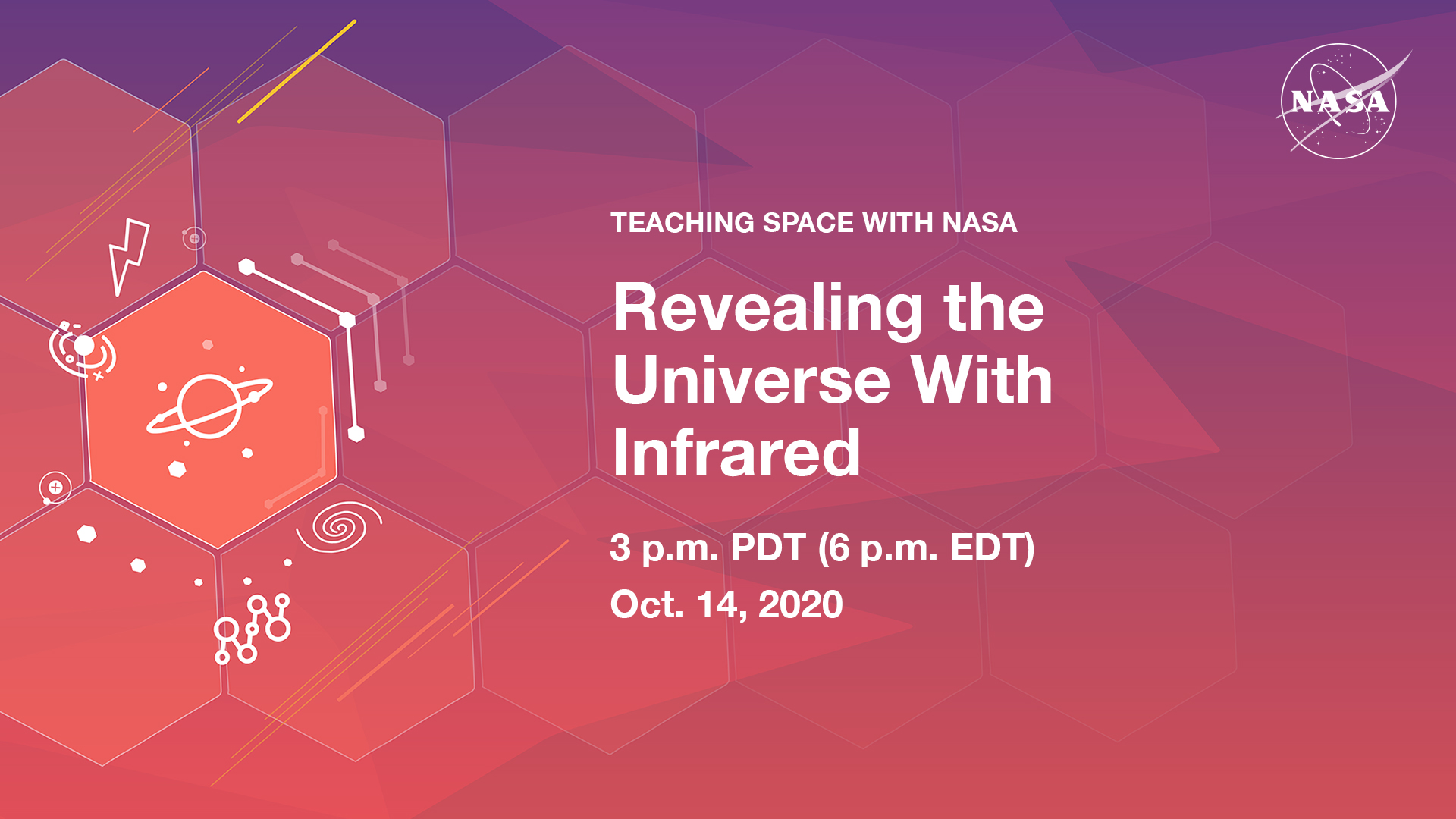 Expert Talk
Expert TalkTeaching Space With NASA – Revealing the Universe With Infrared
In this educational talk, NASA experts discuss how we use non-visible light to explore the universe.
-
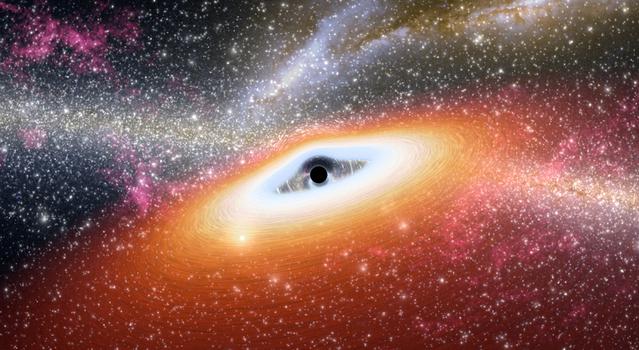
Black Holes: By the Numbers
What are black holes and how do they form? Explore more in this slideshow for students.
Subject Science
Grades 4-12
Time < 30 mins
- Slide Deck: James Webb Space Telescope
- Sonification: Exoplanet WASP-96b Spectra
- Interactive: The James Webb Space Telescope Virtual Experience
- Gallery: Cool Cosmos Infrared Galaxy
- Interactive: Viewspace – Star Formation: Eagle Nebula
- Article for Kids: What is a Transit?
- Article for Kids: What is a Light Year?
- Article for Kids: What is a Nebula?
- Article for Kids: What is a Black Hole?
- Article for Kids: What is a Galaxy?
- Article for Kids: Explore the Electromagnetic Spectrum
- Article for Kids: How Old are Galaxies?
- Website: James Webb Space Telescope
- Image Gallery: James Webb Space Telescope Images
- Website: NASA Exoplanets
- Interactive: Eyes on Exoplanets
- Facts & Figures: Exoplanet Catalog
- Downloads: James Webb Space Telescope Poster
- Downloads: Exoplanet Travel Bureau Posters
- Webb Telescope Videos
- Webb Telescope Paper Model
NASA's Universe of Learning materials are based upon work supported by NASA under award number NNX16AC65A to the Space Telescope Science Institute, working in partnership with Caltech/IPAC, Center for Astrophysics | Harvard & Smithsonian, and the Jet Propulsion Laboratory.
TAGS: Stars & Galaxies, JWST, K-12 Education, Teaching, Universe of Learning
Teachable Moments | September 30, 2021
Learn About the Universe With the James Webb Space Telescope
Get a look into the science and engineering behind the largest and most powerful space telescope ever built while exploring ways to engage learners in the mission.
NASA is launching the largest, most powerful space telescope ever. The James Webb Space Telescope will look back at some of the earliest stages of the universe, gather views of early star and galaxy formation, and provide insights into the formation of planetary systems, including our own solar system.
Read on to learn more about what the space-based observatory will do, how it works, and how to engage learners in the science and engineering behind the mission.
What It Will Do
The James Webb Space Telescope, or JWST, was developed through a partnership between NASA and the European and Canadian space agencies. It will build upon and extend the discoveries made by the Hubble Space Telescope to help unravel mysteries of the universe. First, let's delve into what scientists hope to learn with the Webb telescope.
A look at the James Webb Space Telescope, its mission and the incredible technological challenge this mission presents. | Watch on YouTube
How Galaxies Evolve
What the first galaxies looked like and when they formed is not known, and the Webb telescope is designed to help scientists learn more about that early period of the universe. To better understand what the Webb telescope will study, it’s helpful to know what happened in the early universe, before the first stars formed.
The universe, time, and space all began about 13.8 billion years ago with the Big Bang. For the first few hundred-thousand years, the universe was a hot, dense flood of protons, electrons, and neutrons, the tiny particles that make up atoms. As the universe cooled, protons and neutrons combined into ionized hydrogen and helium, which had a positive charge, and eventually attracted all those negatively charged electrons. This process, known as recombination, occurred about 240,000 to 300,000 years after the Big Bang.

This image shows the temperature fluctuations (shown as color differences) in the cosmic microwave background from a time when the universe was less than 400,000 years old. The image was captured by the Wilkinson Microwave Anisotropy Probe, or WMAP, which spent nine years, from 2001 to 2010, collecting data on the early universe. Credit: NASA | › Full image and caption | + Expand image
Light that previously couldn’t travel without being scattered by the dense ionized plasma of early particles could now travel freely. The very first form of light we can look back and see comes from this time and is known as the cosmic microwave background radiation. It is essentially a map of temperature fluctuations across the universe left behind from the Big Bang. The fluxuations give clues about the origin of galaxies and the large-scale structure of galaxies. There were still no stars in the universe at this time, so the next several hundred million years are known as the cosmic dark ages.
Current theory predicts that the earliest stars were big – 30 to 300 times the size of our Sun – and burned quickly, ending in supernova explosions after just a few million years. (For comparison, our Sun has a lifespan of about 10 billion years and will not go supernova.) Observing these luminous supernovae is one of the few ways scientists could study the earliest stars. That is vital to understanding the formation of objects such as the first galaxies.
By using the Webb telescope to compare the earliest galaxies with those of today, scientists hope to understand how they form, what gives them their shape, how chemical elements are distributed across galaxies, how central black holes influence their galaxies, and what happens when galaxies collide.
Learn how the James Webb Space Telescope's ability to look farther into space than ever before will bring newborn galaxies into view. | Watch on YouTube
How Stars and Planetary Systems Form
Stars and their planetary systems form within massive clouds of dust and gas. It's impossible to see into these clouds with visible light, so the Webb telescope is equipped with science instruments that use infrared light to peer into the hearts of stellar nurseries. When viewing these nurseries in the mid-infrared – as the Webb telescope is designed to do – the dust outside the dense star forming regions glows and can be studied directly. This will allow astronomers to observe the details of how stars are born and investigate why most stars form in groups as well as how planetary systems begin and evolve.

This mosaic image is the sharpest wide-angle view ever obtained of the starburst galaxy, Messier 82 (M82). The galaxy is remarkable for its bright blue disk, webs of shredded clouds and fiery-looking plumes of glowing hydrogen blasting out of its central regions.Throughout the galaxy's center, young stars are being born 10 times faster than they are inside our entire Milky Way Galaxy. Credit: NASA, ESA, and The Hubble Heritage Team (STScI/AURA); Acknowledgment: J. Gallagher (University of Wisconsin), M. Mountain (STScI), and P. Puxley (National Science Foundation) | › Full image and caption | + Expand image
How Exoplanets and Our Solar System Evolve
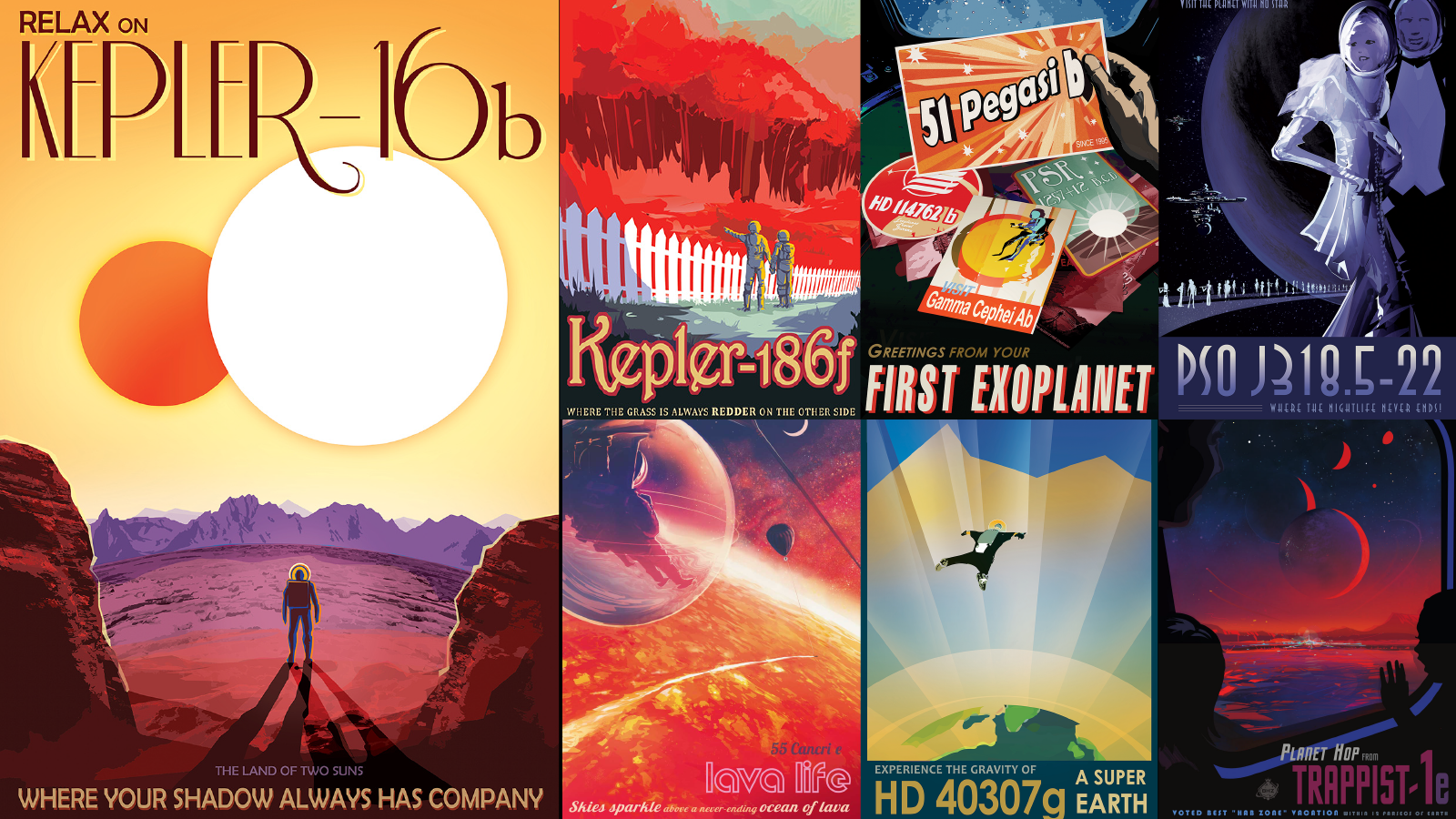
As we make more discoveries about exoplanets, artists at NASA are imagining what future explorers might encounter on these faraway worlds as part of the Exoplanet Travel Bureau poster series. Credit: NASA | › View and download the posters | + Expand image
The first planet outside our solar system, or exoplanet, was discovered in 1992. Since then, scientists have found thousands more exoplanets and estimate that there are hundreds of billions in the Milky Way galaxy alone. There are many waiting to be discovered and there is more to learn about the exoplanets themselves, such as what makes up their atmospheres and what their weather and seasons may be like. The Webb telescope will help scientists do just that.
In our own solar system, the Webb telescope will study planets and other objects to help us learn more about our solar neighborhood. It will be able to complement studies of Mars being carried out by orbiters, landers, and rovers by searching for molecules that may be signs of past or present life. It is powerful enough to identify and characterize icy comets in the far reaches of our solar system. And it can be used to study places like Saturn, Uranus, and Neptune while there are no active missions at those planets.
How It Works
The Webb telescope has unique capabilities enabled by the way it views the universe, its size, and the new technologies aboard. Here's how it works.
Peering Into the Infrared
To see ancient, distant galaxies, the Webb telescope was built with instruments sensitive to light in the near- and mid-infrared wavelengths.
Light leaving these galaxies can take billions of years to reach Earth, so when we see these objects, we’re actually seeing what they looked like in the past. The farther something is from Earth, the farther back in time it is when we observe it. So when we look at light that left objects 13.5 billion years ago, we're seeing what happened in the early universe.
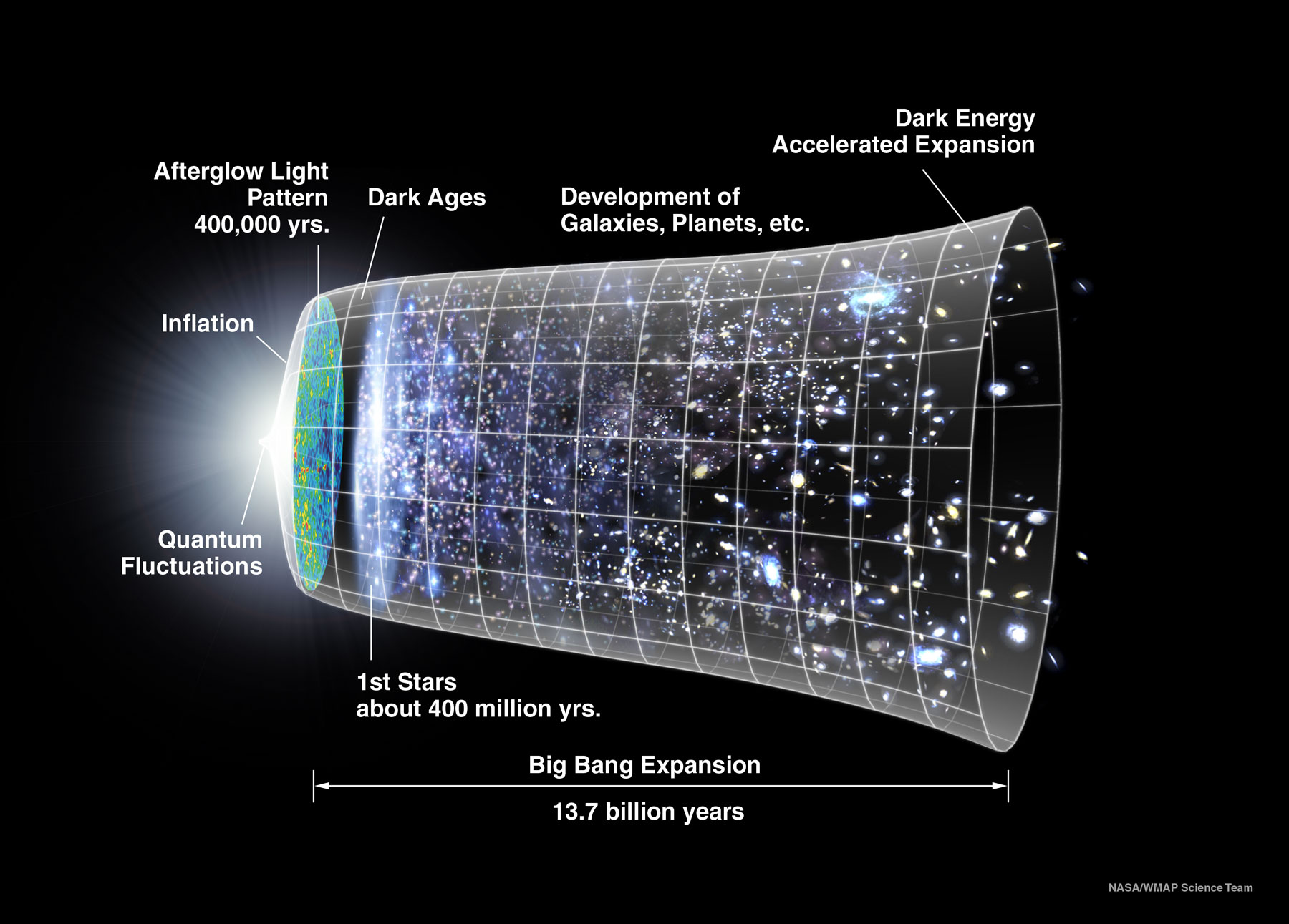
An illustrated timeline of the universe. Credit: WMAP | + Expand image
As light from distant objects travels to Earth, the universe continues to expand, something it’s been doing since the Big Bang. The waves that make up the light get stretched as the universe expands. You can see this effect in action by making an ink mark on a rubber band and observing how the mark stretches out when you pull on the rubber band.

Light waves get stretched as the universe expands similar to how this ink mark stretches out as the elastic is pulled. Get students modeling and exploring this effect with this standards-aligned math lesson. Credit: NASA/JPL-Caltech | + Expand image
What this means for light coming from distant galaxies is that the visible lightwaves you would be able to see with your eyes get stretched out so far that the longer wavelengths shift from visible light into infrared. Scientists refer to this phenomenon as redshift – and the farther away an object is, the more redshift it undergoes.
Webb telescope’s infrared sensing equipment will give scientists the chance to study some of the earliest stars that exploded in supernova events, creating the elements necessary to build planets and form life.
Gathering Light
The first stars were massive, their life cycles ending in supernova explosions. The light from these explosions has traveled so far that it is incredibly dim. This is due to the inverse square law. You experience this effect when a room appears to get darker as you move away from a light source.
To see such dim light, the Webb telescope needs to be extremely sensitive. A telescope’s sensitivity, or its ability to detect faint signals, is related to the size of the mirror it uses to gather light. On the Webb telescope, 18 hexagonal mirrors combine to form a massive primary mirror that is 21 feet (6.5 meters) across.
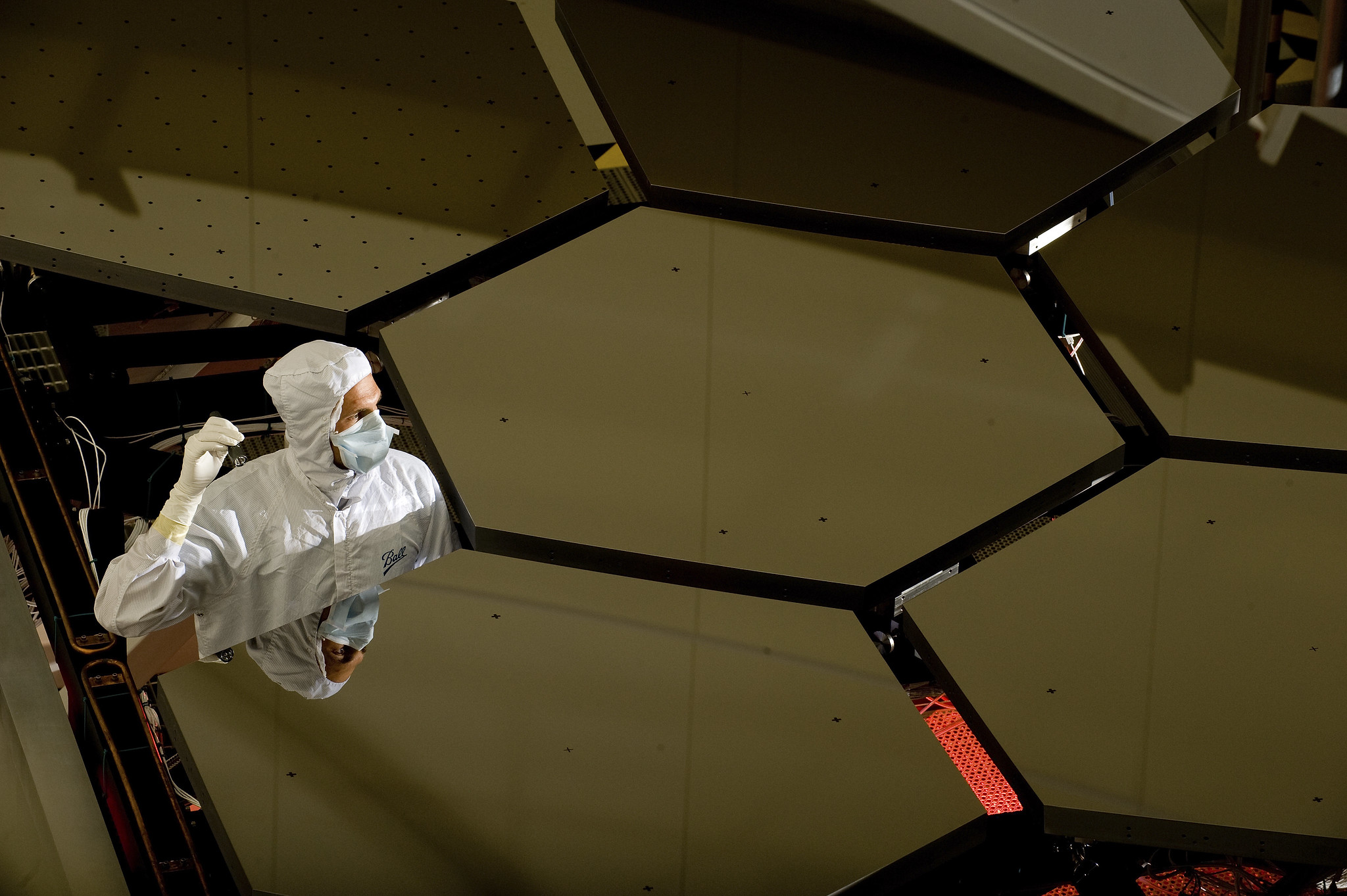
A technician inspects the Webb telescope's honeycomb-shaped mirror. The telescope's primary mirror is 21 feet (6.5 meters) across and is made up of 18 smaller hexagonal mirrors that must fold for launch and unfurl after the telescope reaches its orbit in space. Credit: NASA/MSFC/David Higginbotham/Emmett Given | › Full image and caption | + Expand image
Compared with the Hubble Space Telescope’s eight-foot (2.4 meter) diameter mirror, this gives the Webb telescope more than six times the surface area to collect those distant particles of light known as photons. Hubble’s famous Ultra Deep Field observation captured images of incredibly faint, distant galaxies by pointing at a seemingly empty spot in space for 16 days, but the Webb telescope will be able to make a similar observation in just seven hours.
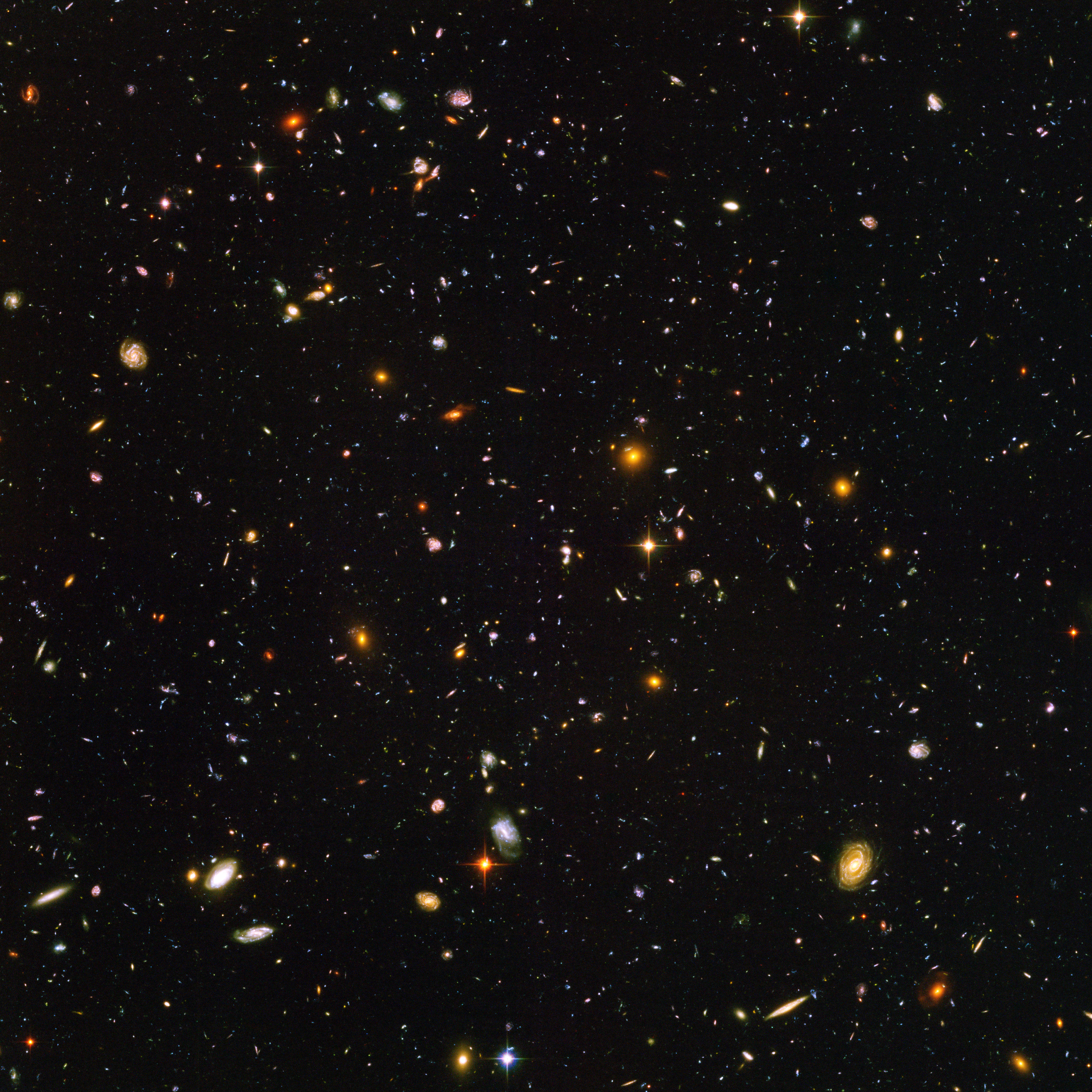
This image, called the Hubble Ultra Deep Field, shows 28 of the more than 500 young galaxies that existed when the universe was less than 1 billion years old. Credit: NASA, ESA, R. Bouwens and G. Illingworth (University of California, Santa Cruz) | › Full image and caption | + Expand image
Keeping Cool
The Webb Telescope gathers its scientific data as infrared light. To detect the faint signals of objects billions of light years away, the instruments inside the telescope have to be kept very cold, otherwise those infrared signals could get lost in the heat of the telescope. Engineers accounted for this with a couple of systems designed to get the instruments cold and keep them cold.
The Webb telescope's orbit around the Sun – sitting about 1 million miles (1.5 million kilometers) from Earth at Lagrange point 2 – keeps the spacecraft pretty far from our planet's heat, but even that’s not enough. To further reduce the temperature on the instruments, the spacecraft will unfurl a tennis-court-size sunshield that will block light and heat from the Sun, Earth, and Moon using five layers of specially coated material. Each layer blocks incoming heat, and the heat that does make it through is redirected out of the sides of the sunshield. Additionally, the vacuum between each layer provides insulation.

The sunshield is made up of five layers of specially coated material designed to block the Webb telescope's sensitive instruments from incoming heat from the Sun, Earth, and Moon. This photo, taken in the cleanroom at Northrop Grumman in Southern California in December 2020, shows the sunshield fully deployed and tensioned as it will be in space. Credit: NASA/Chris Gunn | › Full image and caption | + Expand image
The sunshield is so effective that the temperatures on the Sun-facing side of the telescope could be hot enough to boil water, while on the side closest to the instruments, the temperature could be as low as -394 F (-237 C, 36 K).
That’s cold enough for the near-infrared instruments to operate, but the Mid-Infrared Instrument, or MIRI, needs to be even colder. To bring down the temperature of MIRI, the Webb telescope is equipped with a special cryocooler that pumps chilled helium to the instrument to reduce its operating temperature to about -448 F (-267 C, 6 K).
Spotting Exoplanets
The Webb telescope will search for exoplanets using two different methods.
Using the transit method, the Webb telescope will look for the regular pattern of dimming that occurs when an exoplanet transits its star, or passes between the star and the telescope. The amount of dimming can tell scientists a lot about the passing exoplanet, such as the size of the planet and its distance from the star.

This animation shows how the transit method is used to hunt for planets outside our solar system. When exoplanets transit their parent star, the Webb telescope (like the Kepler space telescope, depicted here) will be able to detect the dip in the star’s brightness, providing scientists with key information about the transiting exoplanet. Students can see this technique in action with this transit math problem. Credit: NASA/JPL-Caltech | + Expand image
The second method the Webb telescope will use to search for exoplanets is direct imaging – capturing actual images of planets beyond our solar system. To enable direct imaging of exoplanets, the Webb telescope is equipped with a coronagraph. Just like you might use your hand to block a bright light, a coronagraph blocks starlight from reaching a telescope’s instruments, allowing a dim exoplanet orbiting a star to be seen.
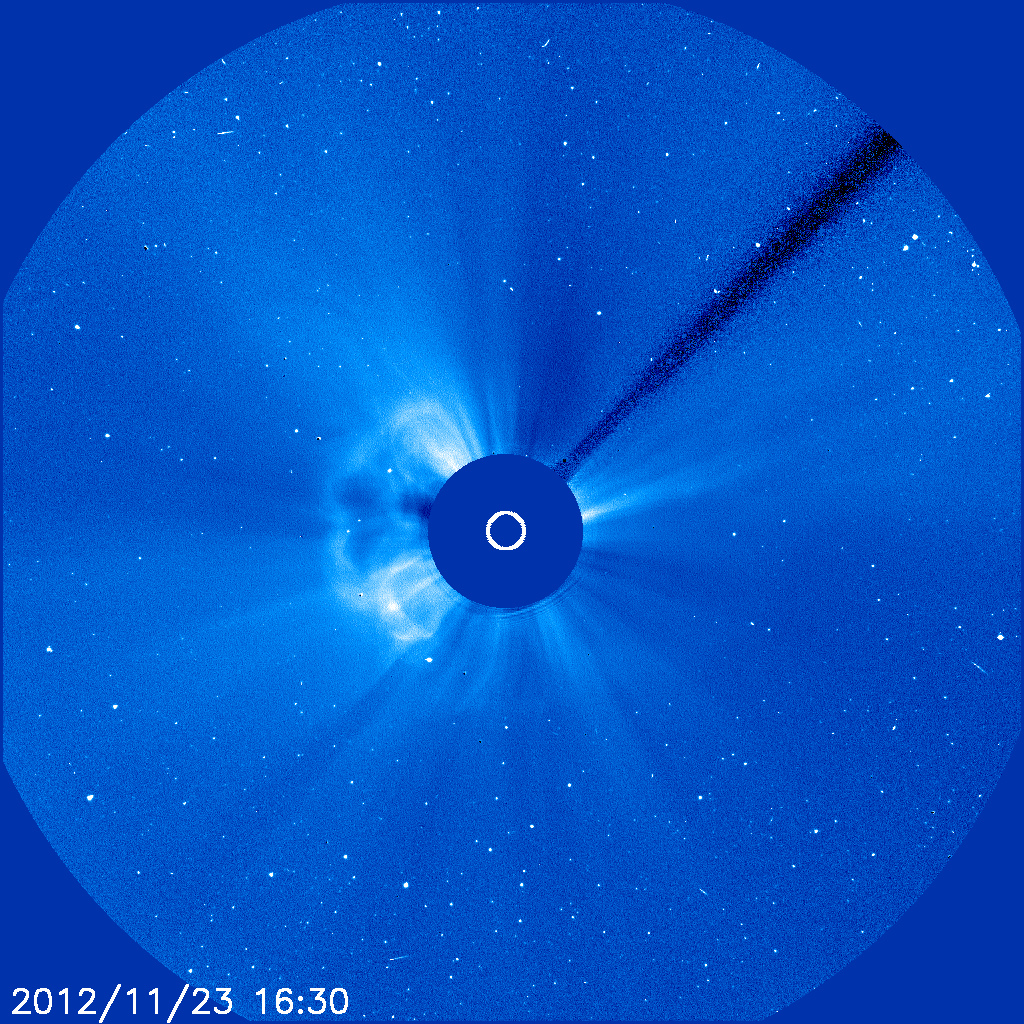
This “coronagraph” image taken by the Solar and Heliospheric Observatory, or SOHO, shows dim features around our Sun. Similarly, direct images of exoplanets captured by the Webb telescope will reveal details normally washed out by the brightness of stars. Credit: ESA&NASA/SOHO | + Expand image
The Webb telescope can uncover even more using spectroscopy. Light from a star produces a spectrum, which displays the intensity of light at different wavelengths. When a planet transits its star, some of the light from the star will pass through the planet's atmosphere before reaching the Webb telescope. Since all elements and molecules, such as methane and water, absorb energy at specific wavelengths, spectra from light that has passed through a planet’s atmosphere may contain dark lines known as absorption lines that tell scientists if there are certain elements present.
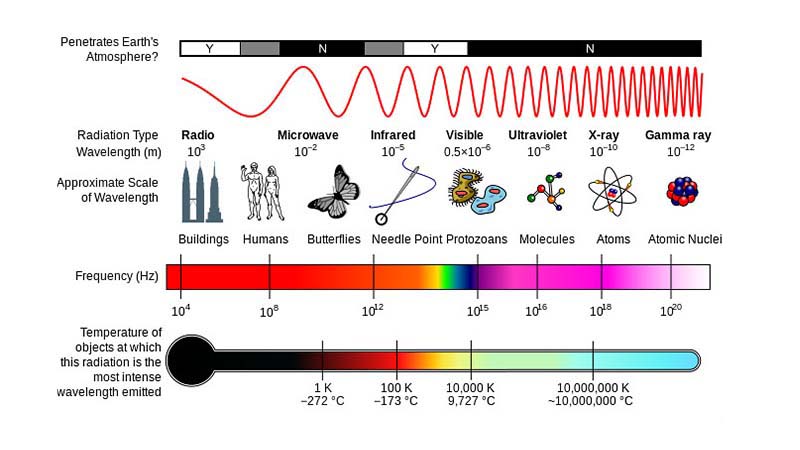
By looking at the unique spectrum produced when the light from a star shines through the atmosphere of a transiting exoplanet, scientists can learn whether certain elements are present on that planet. Credit: NASA | + Expand image
Using direct imaging and spectroscopy, scientists can learn even more about an exoplanet, including its color, seasons, rotation, weather, and vegetation if it exists.
All this could lead scientists to the ultimate exoplanet discovery: an Earth-size planet with an atmosphere like ours in its star’s habitable zone – a place where liquid water could exist.
Setting Up in Space
The Webb telescope will launch from French Guiana on top of an Ariane 5 rocket, a massive rocket capable of lifting the telescope, which weighs nearly 14,000 pounds (6,200 kilograms), to its destination.
The telescope's large mirror and giant sunshield are too big to fit inside the 18-foot (5.4-meter) wide rocket fairing, which protects the spacecraft during launch. To overcome this challenge, engineers designed the telescope's mirror and sunshield to fold for launch.
Two sides of the mirror assembly fold back for launch, allowing them to fit inside the fairing. The sunshield, which is 69.5 feet (21 meters) long and 46.5 feet (14 meters) wide, is carefully folded 12 times like origami so that it's narrow enough for launch. These are just two examples of several folding mechanisms needed to fit the massive telescope in its rocket for launch.
It will take about a month for the Webb telescope to reach its destination and unfurl its mirrors and sunshield. Scientists need another five months to cool down the instruments to their operating temperatures and align the mirrors correctly.
Approximately six months after launch, checkouts should be complete, and the telescope will begin its first science campaign and science operations.
Learn more and follow along with the mission from launch and unfolding to science observations and discovery announcements on the James Webb Space Telescope website.
Teach It
Check out these resources to bring the real-life STEM behind the mission into your teaching with lesson guides for educators, projects and slideshows for students, and more.
Educator Guides
Student Activities
Articles for Students
- What is the James Webb Space Telescope?
- What is the Big Bang?
- What is a galaxy?
- What is a satellite galaxy?
- What is a transit?
- What is a black hole?
- What is a light year?
- What is a nebula?
- What is an exoplanet?
- How many solar systems are in our galaxy?
- How old are galaxies?
- What is a supernova?
- Explore the electromagnetic spectrum
Videos for Students
- Space Place in a Snap: The Solar System’s Formation
- Space Place in a Snap: Searching for Other Planets Like Ours
Resources for Educators and Parents
Events
Explore More
- Mission Website: James Webb Space Telescope
- Photos: James Webb Space Telescope
- Videos: James Webb Space Telescope
- Facts & Figures: Mid-Infrared Instrument (MIRI)
NASA's Universe of Learning materials are based upon work supported by NASA under award number NNX16AC65A to the Space Telescope Science Institute, working in partnership with Caltech/IPAC, Center for Astrophysics | Harvard & Smithsonian, and the Jet Propulsion Laboratory.
TAGS: JWST, James Webb Space Telescope, electromagnetic spectrum, exoplanets, universe, solar system, big bang, cosmology, astronomy, star formation, galaxy, galaxies, telescope, life, technology, MIRI, Mars, Engineering, Teaching, Education, Classroom, Science, Universe of Learning




